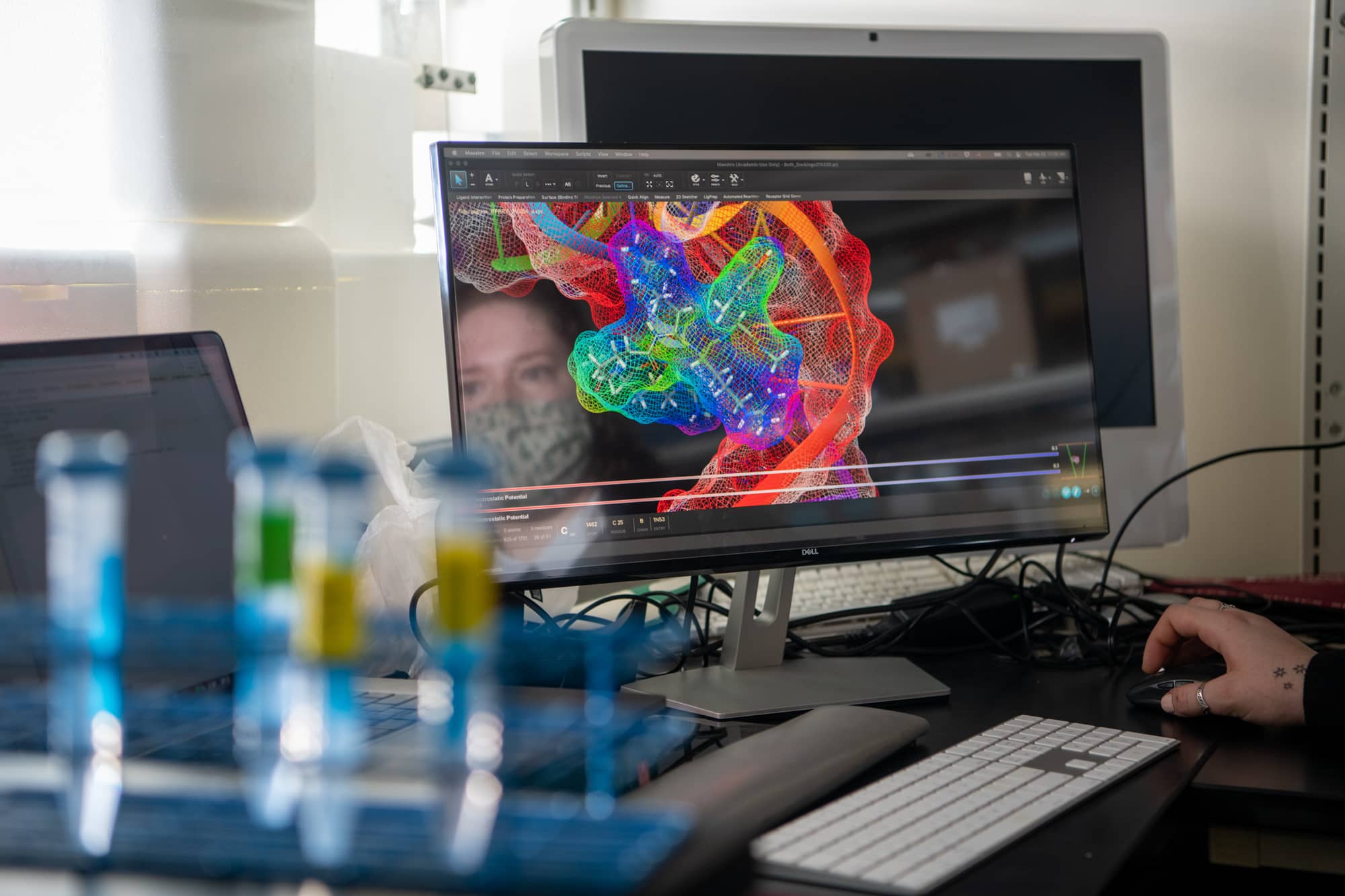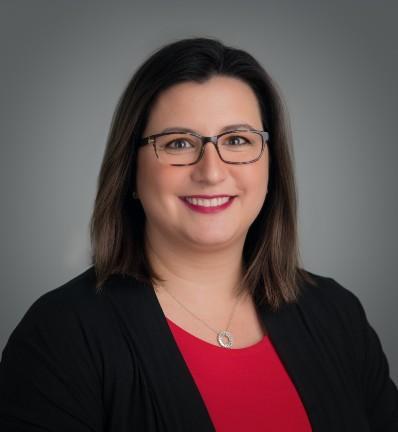
Ohio University has joined the highest level of research institutions in the country by earning the R1 Classification (very high research activity) in the latest Carnegie Classification of Institutions of Higher Education.
Institutions holding the Carnegie R1 designation constitute the top tier of research universities as measured by expenditures supporting research and development, conferral of research doctoral degrees, and employment of Ph.D.-level personnel engaged in research.
Ohio University is leading the way in various fields of research and innovation. The University is recognized internationally for research and scholarship in areas including avionics, biotechnology, communications, environmental studies, history, pipeline corrosion, physics, and psychology; and has world-class fine arts programs that include ceramics, film, and printmaking.
In recent history OHIO researchers have pioneered new interventions to help children with behavioral disorders succeed in school, revealed new insights into the origins of modern concepts of free speech, led major investigations into the responses of biological systems to spaceflight environments, and developed novel methods for using mining waste to generate innovative construction materials.
The Carnegie R1 classification website has more information about the designation. The photos below offer a snapshot of some of the recent groundbreaking work happening across our diverse academic disciplines.
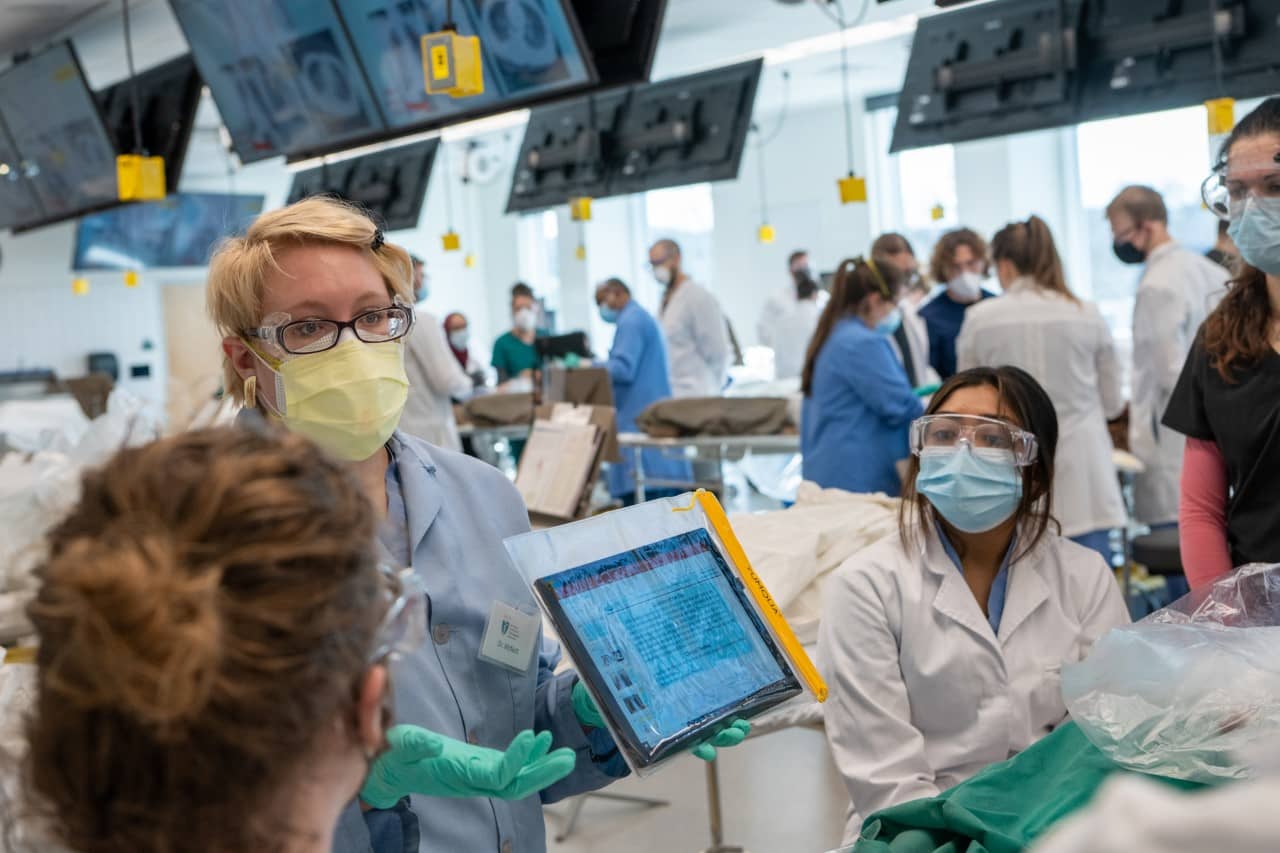
Assistant Professor of Instruction Ellison McNutt, Ph.D., in the Heritage College of Osteopathic Medicine, instructs students in the anatomy lab at Heritage Hall. McNutt recently published research that demonstrated there were multiple species of hominids living in the same time period and region of what is now Tanzania.
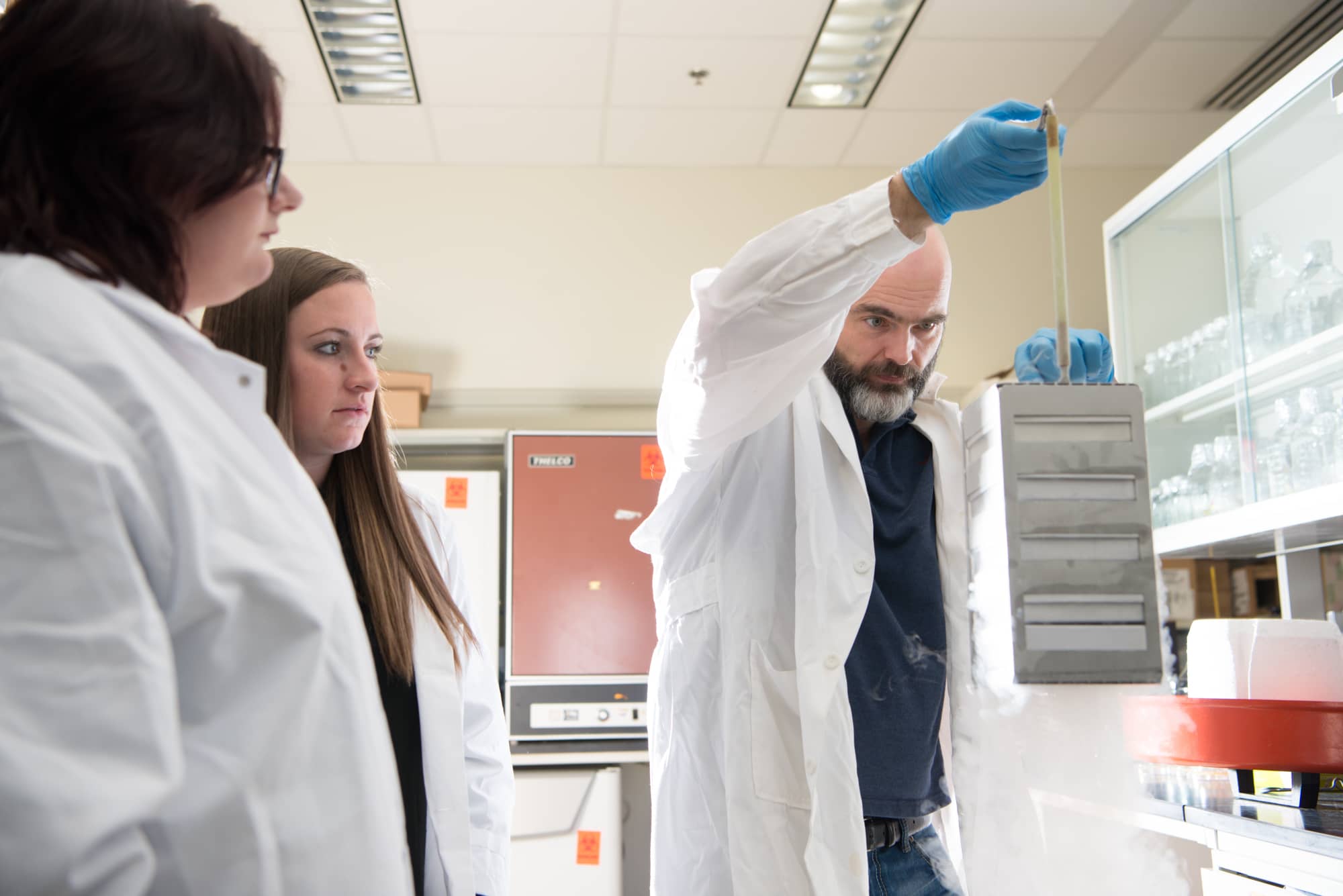
Associate Professor of Biology in the College of Arts and Sciences Ronan Carroll, Ph.D., recently received the Robert F. Rakowski Award for Outstanding Research for breakthrough work involving non-traditional RNA and Staphylococcus bacterial infections. "Dr. Carroll published a paper articulating his recent molecular breakthrough involving non-traditional RNA in 2019. Since then, his discovery has had a huge impact in the microbiology field, and his work has been cited over 20 times," Robert Colvin, Ph.D., professor and chair of Biological Sciences, said.
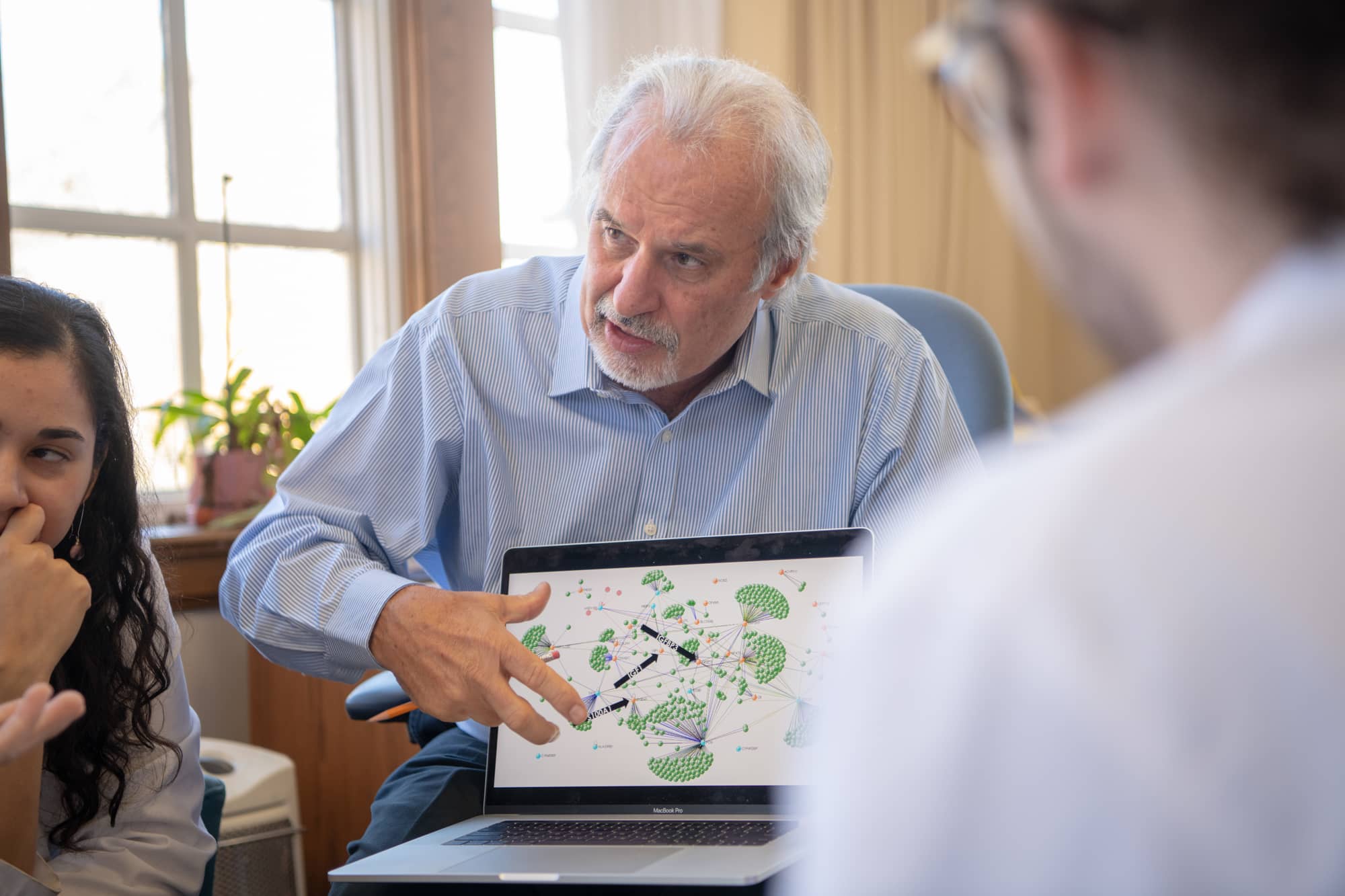
John Kopchick, Ph.D., the Milton and Lawrence H. Goll Eminent Scholar in the Heritage College, is the University’s 2012 Distinguished Professor. Kopchick is known internationally for his 1989 discovery of a compound that became the basis for a drug that treats acromegaly, a disorder that can cause excessive growth of organs and bones and can lead to premature death. In the years since Pfizer's commercial launch of Somavert, Ohio University has received more than $75 million in royalty income from the license.
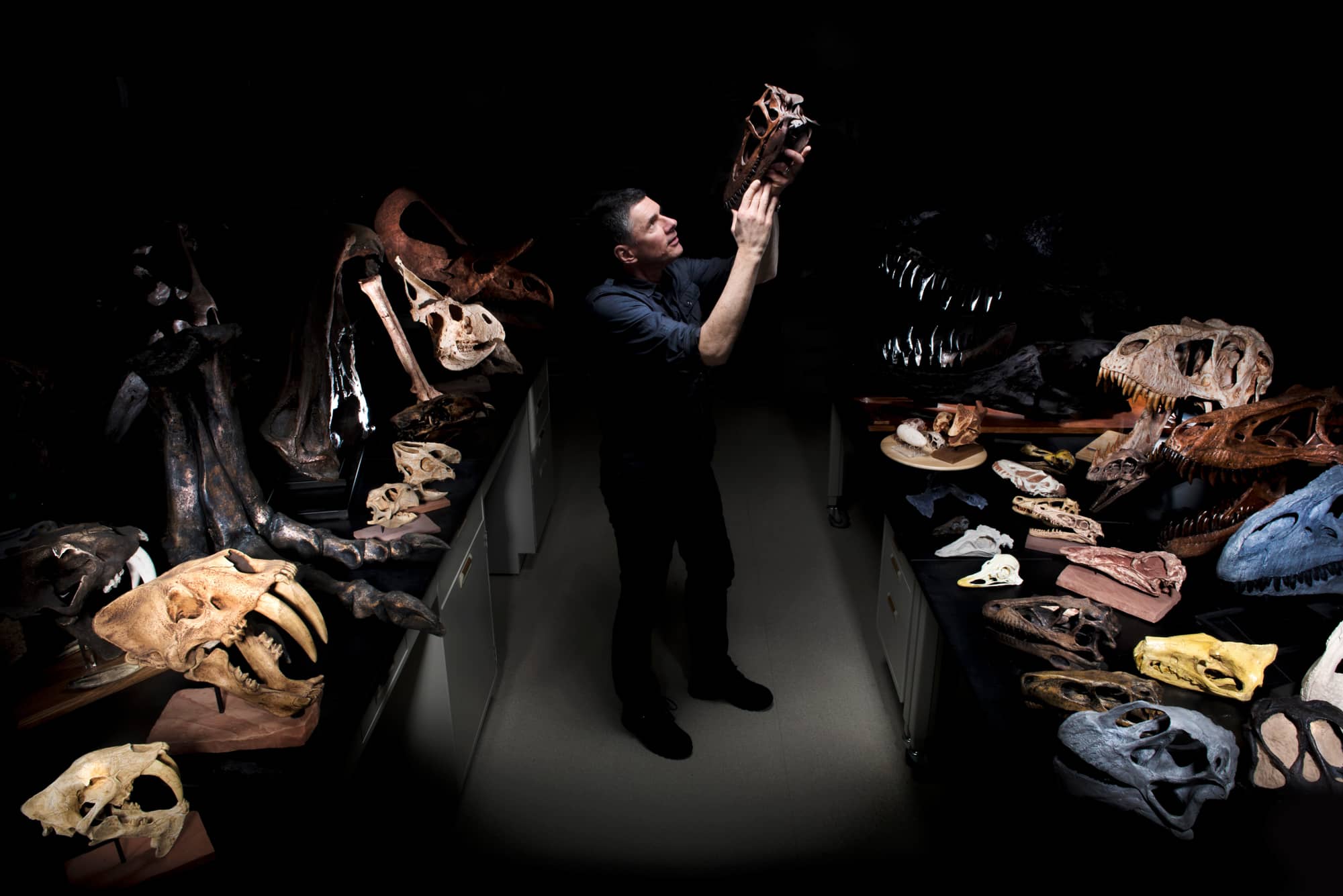
The vision of Heritage College Chang Ying-Chien Professor of Paleontology Lawrence Witmer, Ph.D., is "To use the structure of extinct and modern-day animals to interpret evolutionary history, and to share that history with the broader community." Witmer is known the world over for his dinosaur research and discoveries and is frequently called upon to provide source material, expertise and explanation for shows on a variety of television networks and countless print publications and journals. His work has been the subject of many popular television programs on networks such as the Discovery Channel, History Channel, National Geographic Channel and CBS.
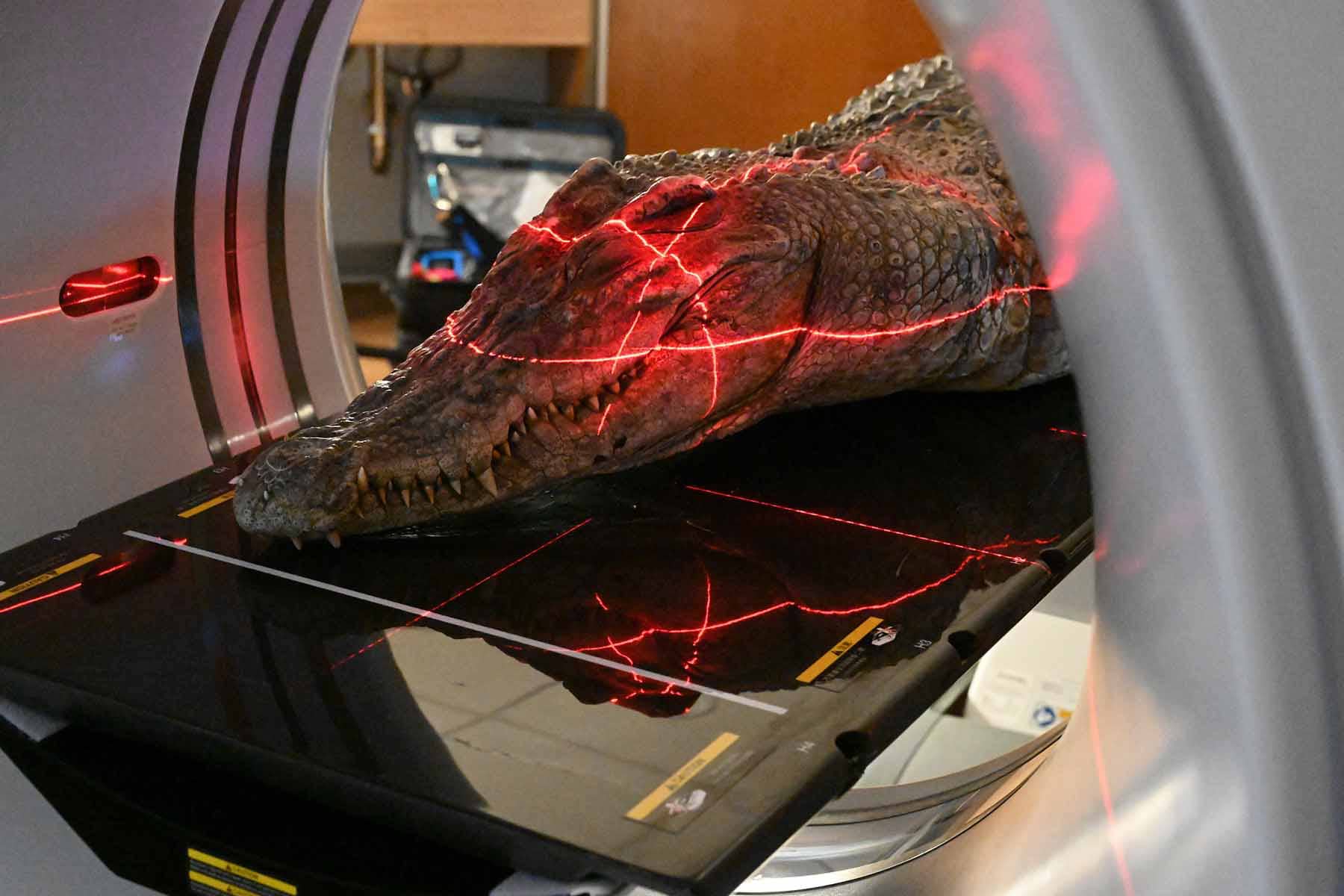
Witmer's team scans a crocodile at OhioHealth O'Bleness Hospital. Witmer’s work, involving doing CT scans of fossils, was featured in National Geographic in 2020.
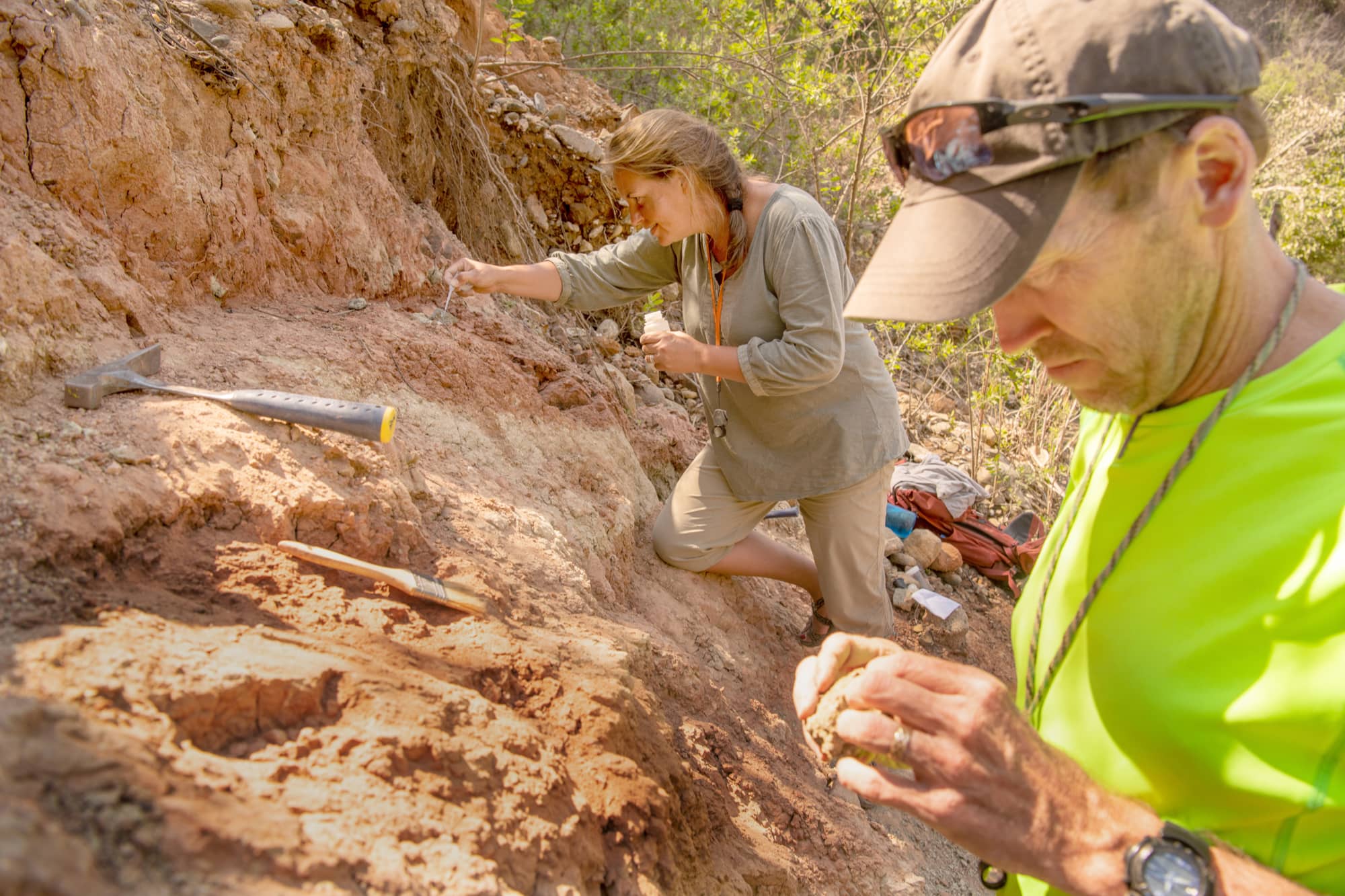
Heritage College professors Nancy Stevens, Ph.D. (left) and Patrick O'Connor, Ph.D., have developed a picture of the ecosystem and evolution of life in the Rukwa Rift Basin in southwestern Tanzania through annual excavations of fossils such as teeth, jawbones, vertebrae and limb elements. The two have described a number of previously-unknown species of dinosaurs and other animals.
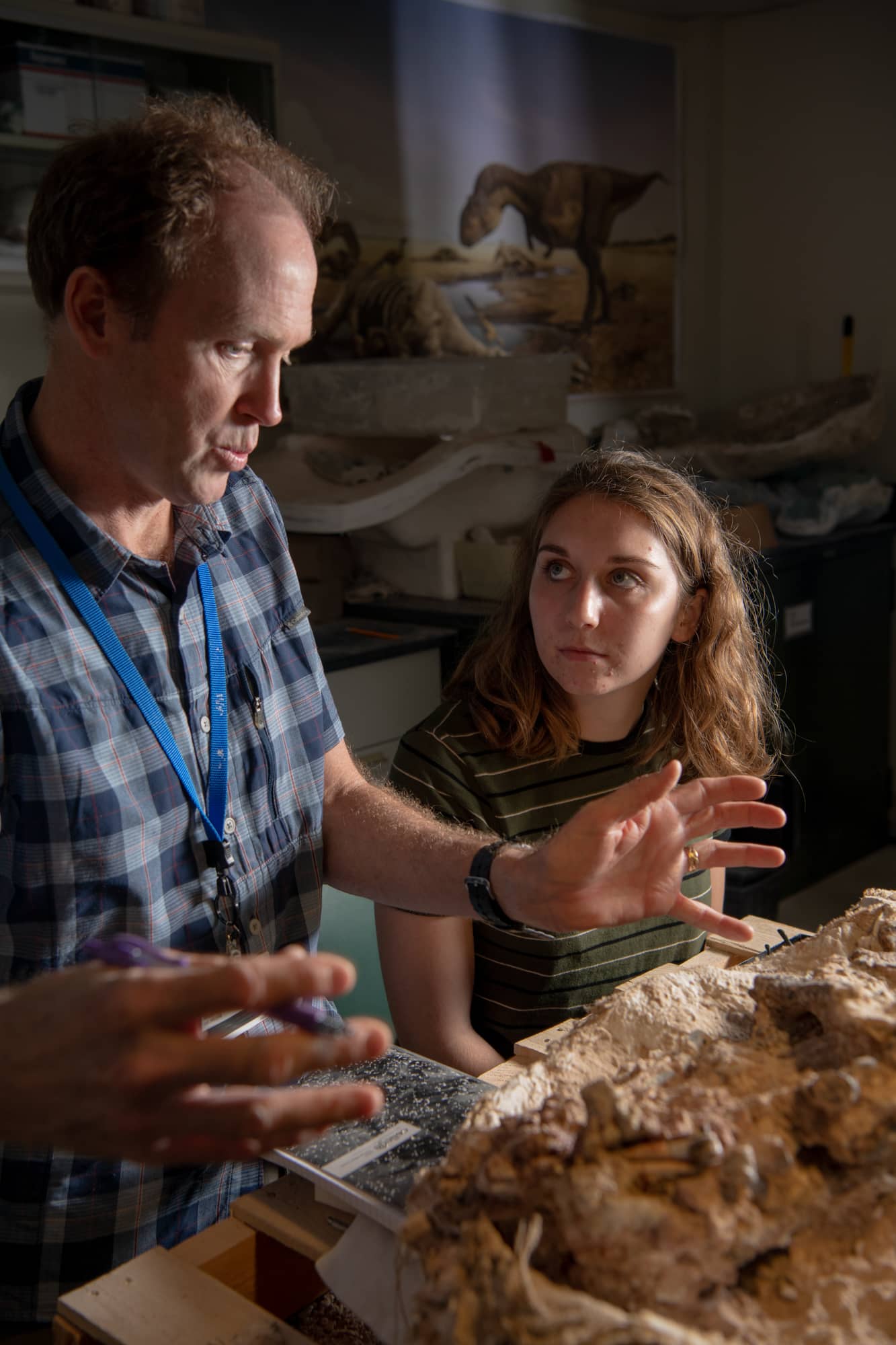
Patrick O'Connor, Ph.D., examines a block of sandstone from Southern Africa that contains small dinosaur skeletons with undergraduate student Suzy Aftabizadeh. The skeletons must be carefully removed from the encasing rock prior to anatomical study.
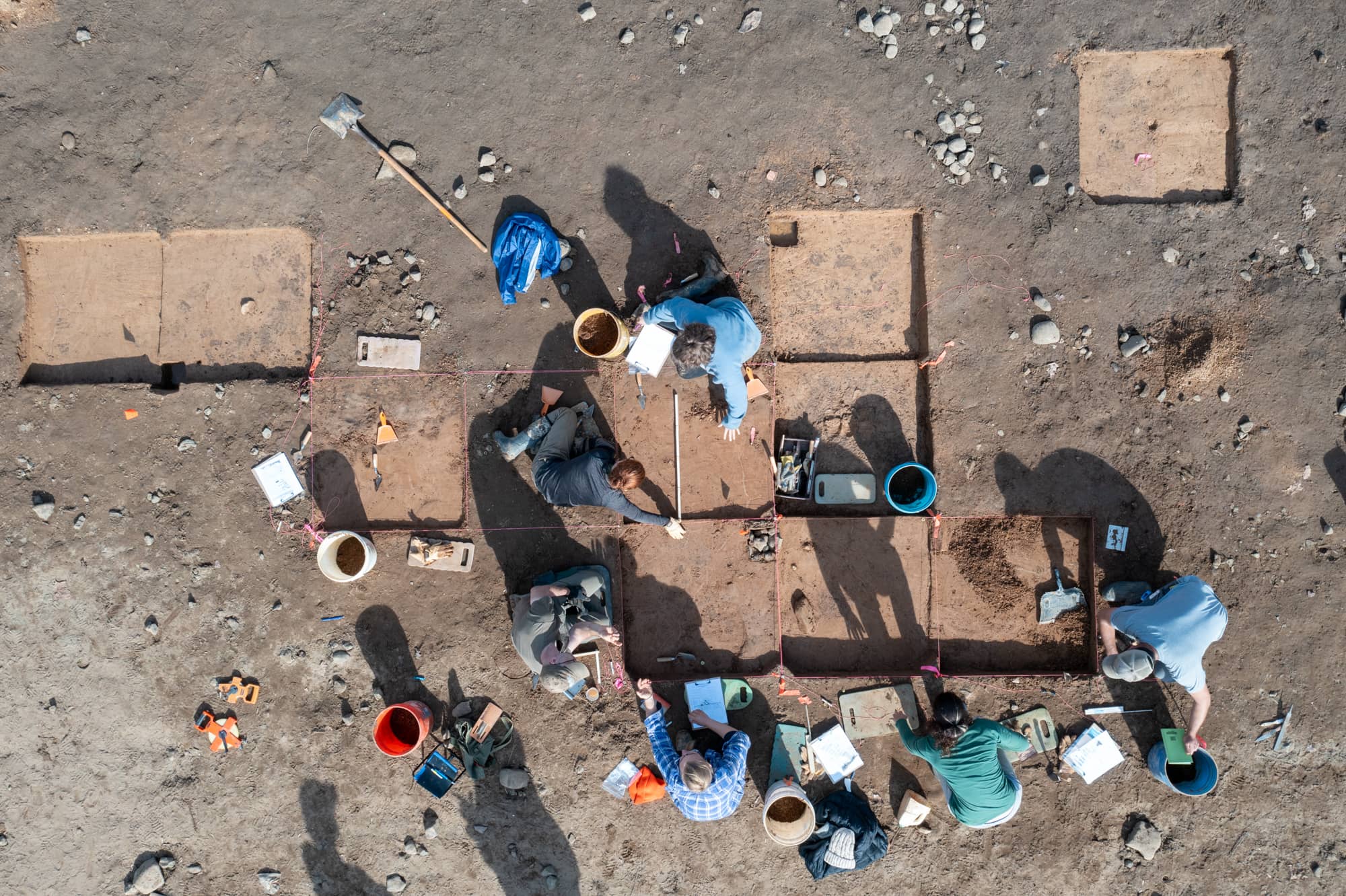
Arts and Sciences Associate Professor of Anthropology Joseph Gingerich, Ph.D., and OHIO archaeology students recently had the chance to take part in an archaeological dig on a 13,000-year-old site in Virginia's Roanoke River Valley as part of a research project initiated by Smithsonian Institution National Museum of Natural History.
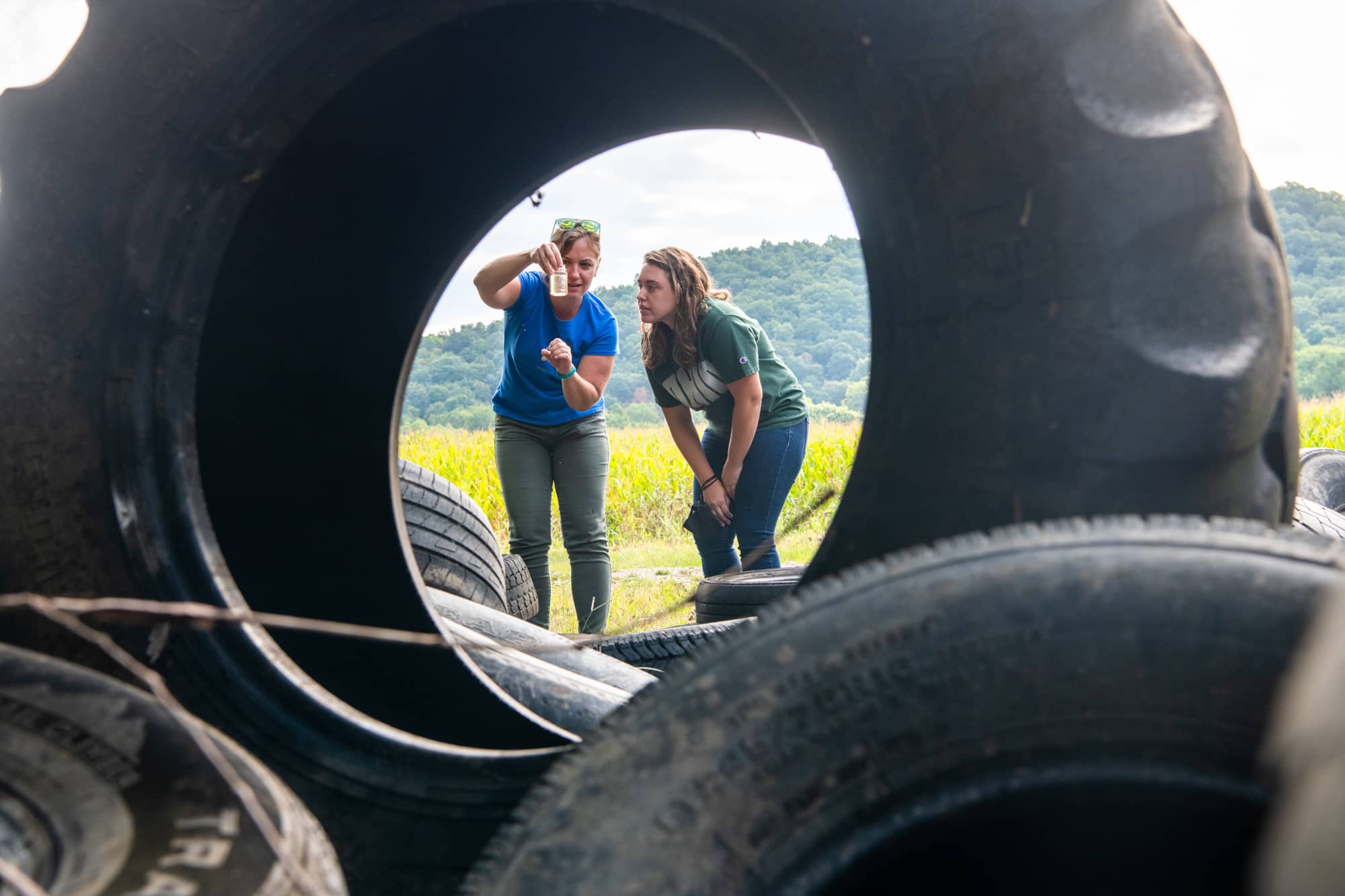
Arts and Sciences Assistant Professor of Instruction and OHIO Honors Coordinator Bekka Brody, Ph.D., and her students have partnered with the Athens County Health Department to combat mosquito-borne illnesses in Ohio.
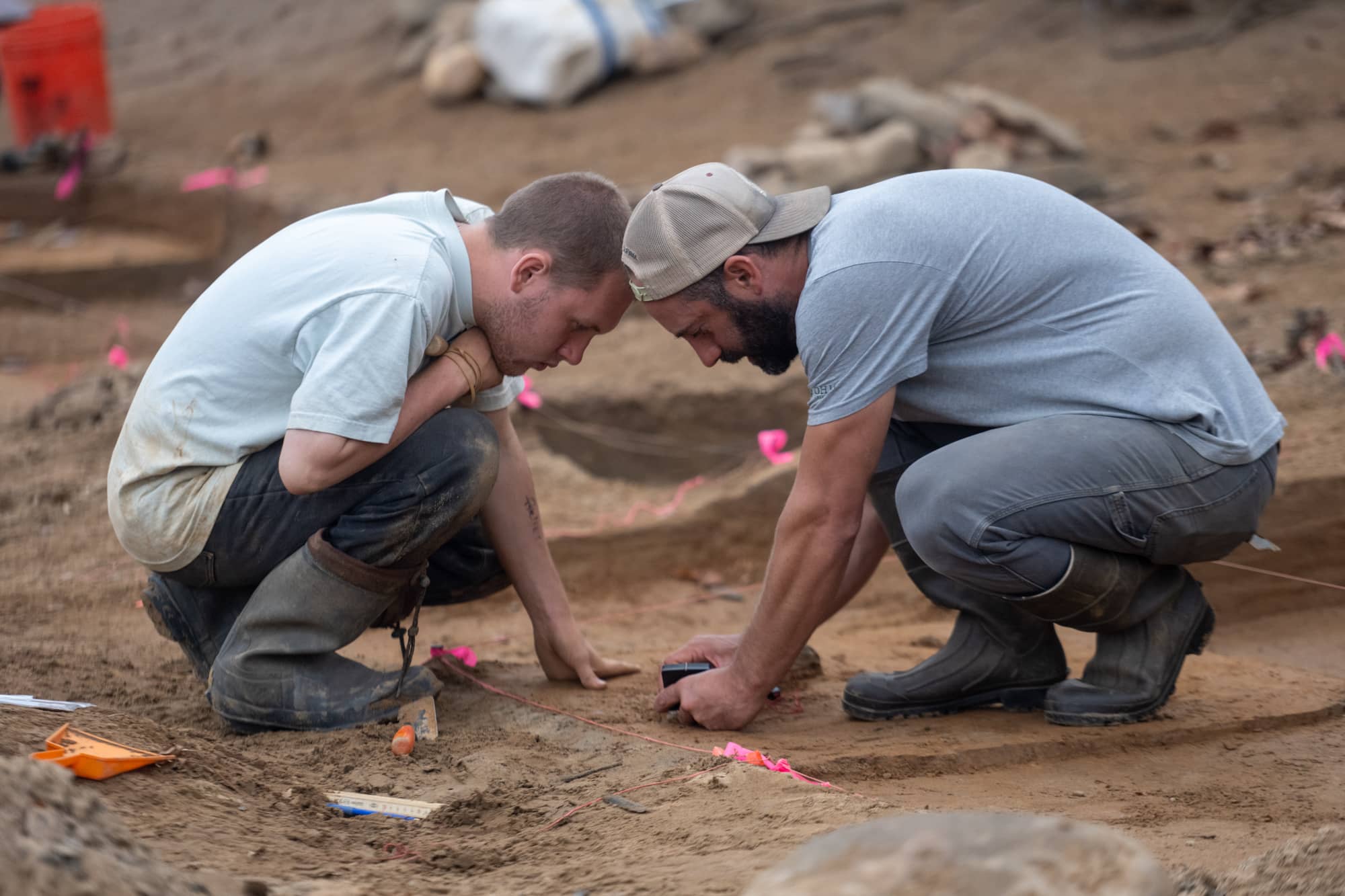
Joseph Gingerich, Ph.D., teaches student Hunter Arnett how to map artifacts.
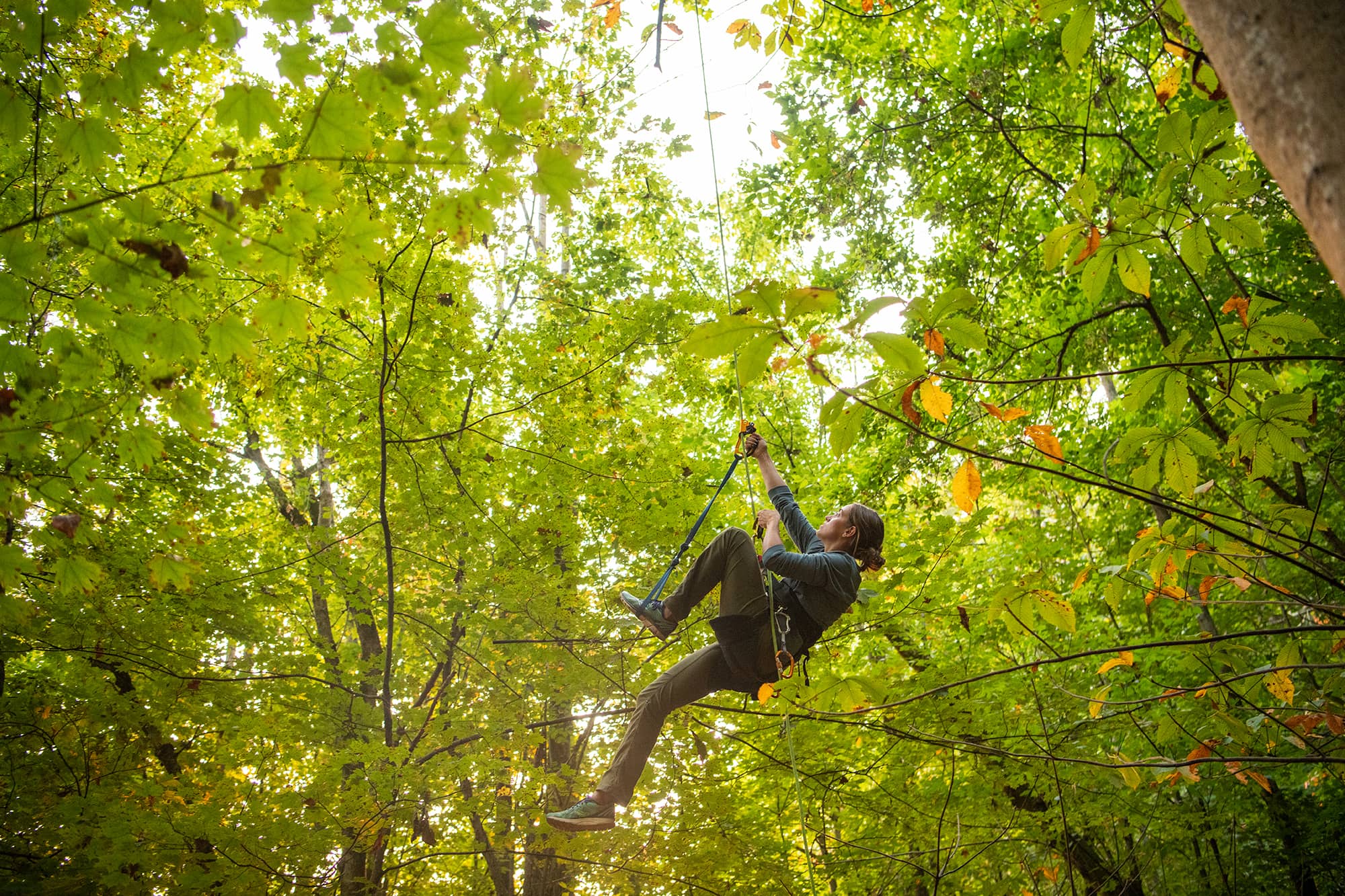
Doctoral student Kelsey Bryant researches the canopy in the Land Lab at the Ridges.
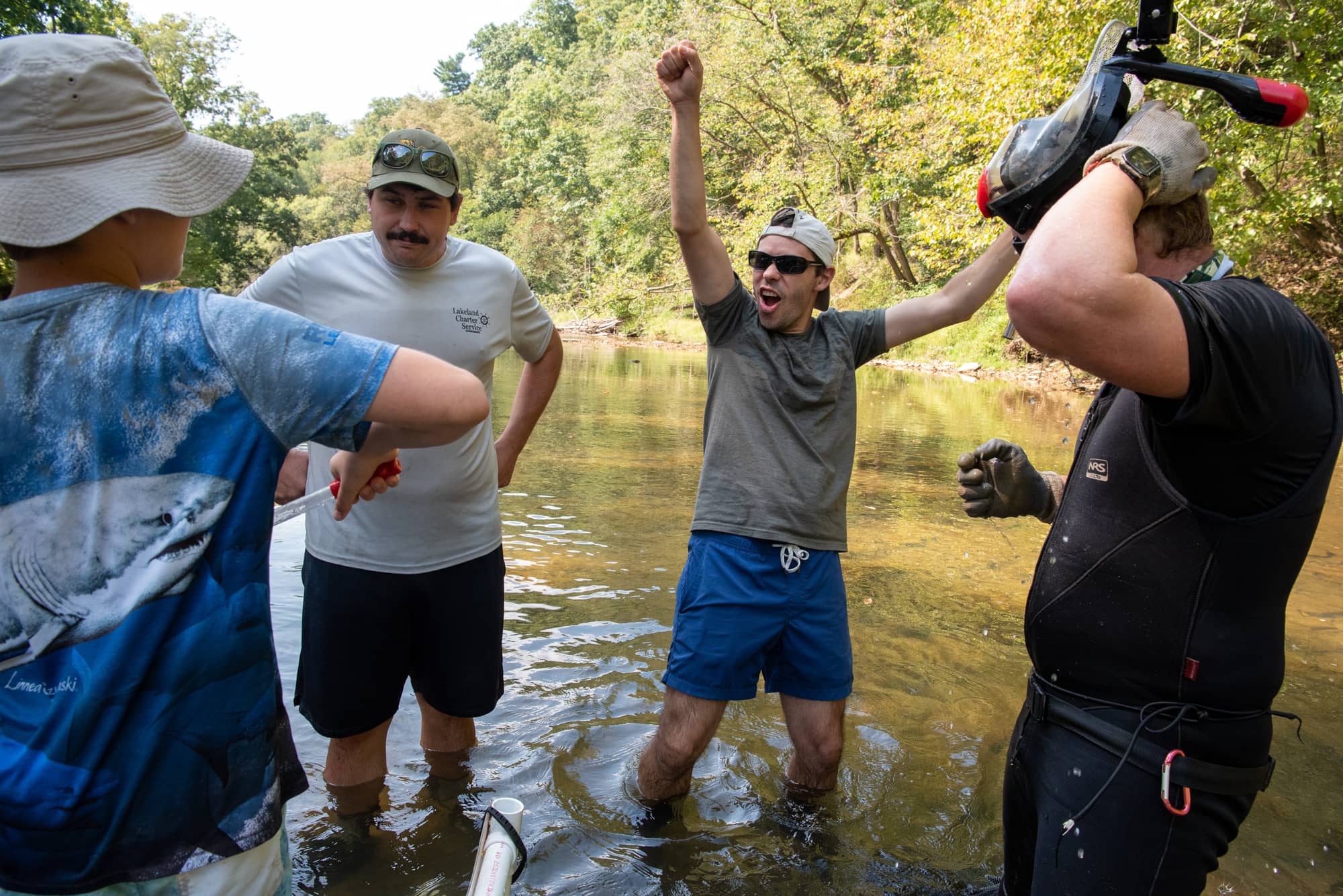
Arts and Sciences Associate Professor of Biology Viorel Popescu, Ph.D., center, reacts while collecting Eastern hellbender eggs from a wild nest in Pennsylvania. The Eastern hellbender, one of North America’s largest salamanders, is a fully aquatic species and an indicator of stream health. Counting eggs and monitoring the success of wild nests is part of an ongoing research program at OHIO aimed at conserving these threatened animals and the streams that they depend on.
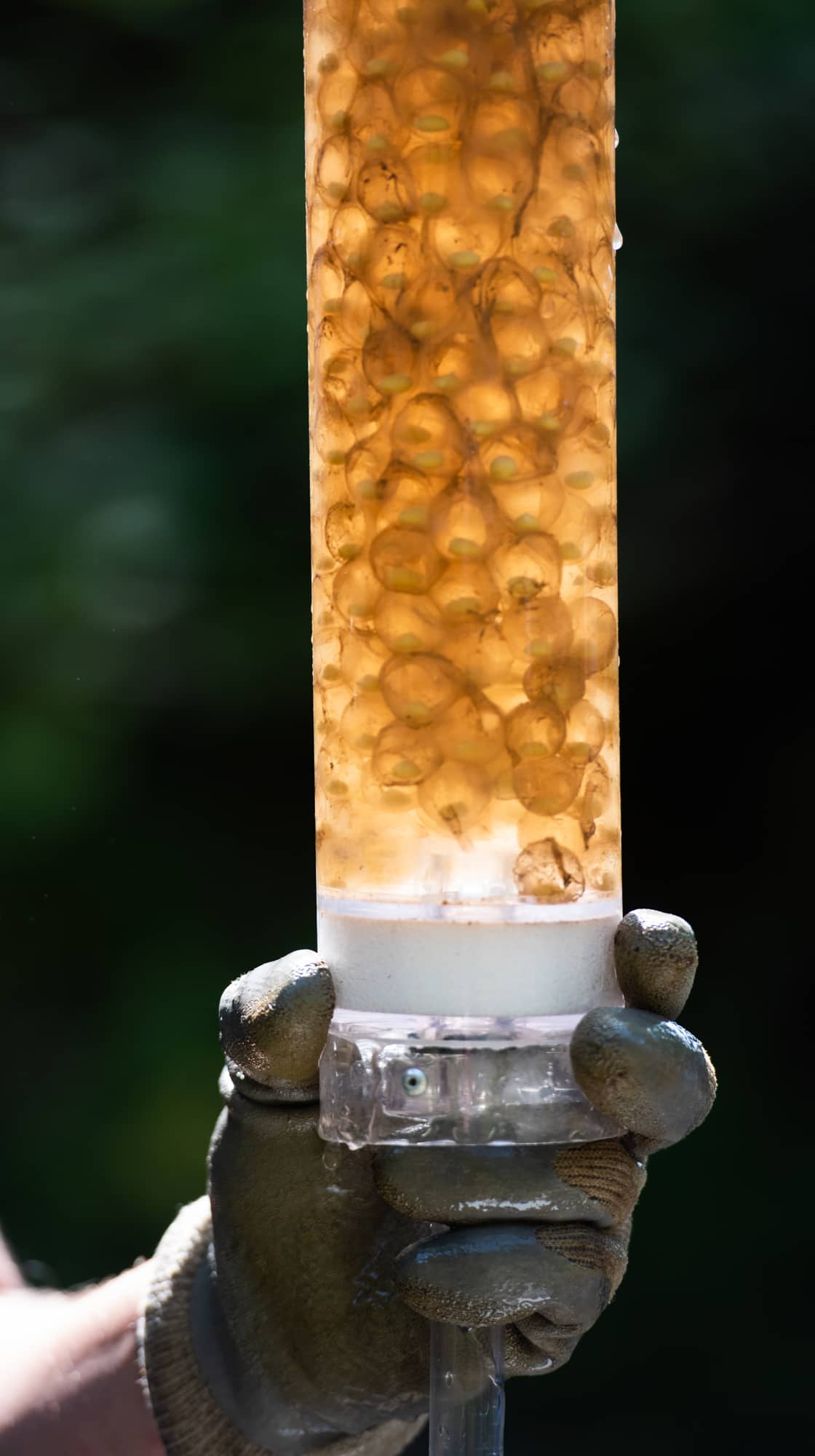
Eastern hellbender eggs collected by Popescu's team from a wild nest in Pennsylvania.
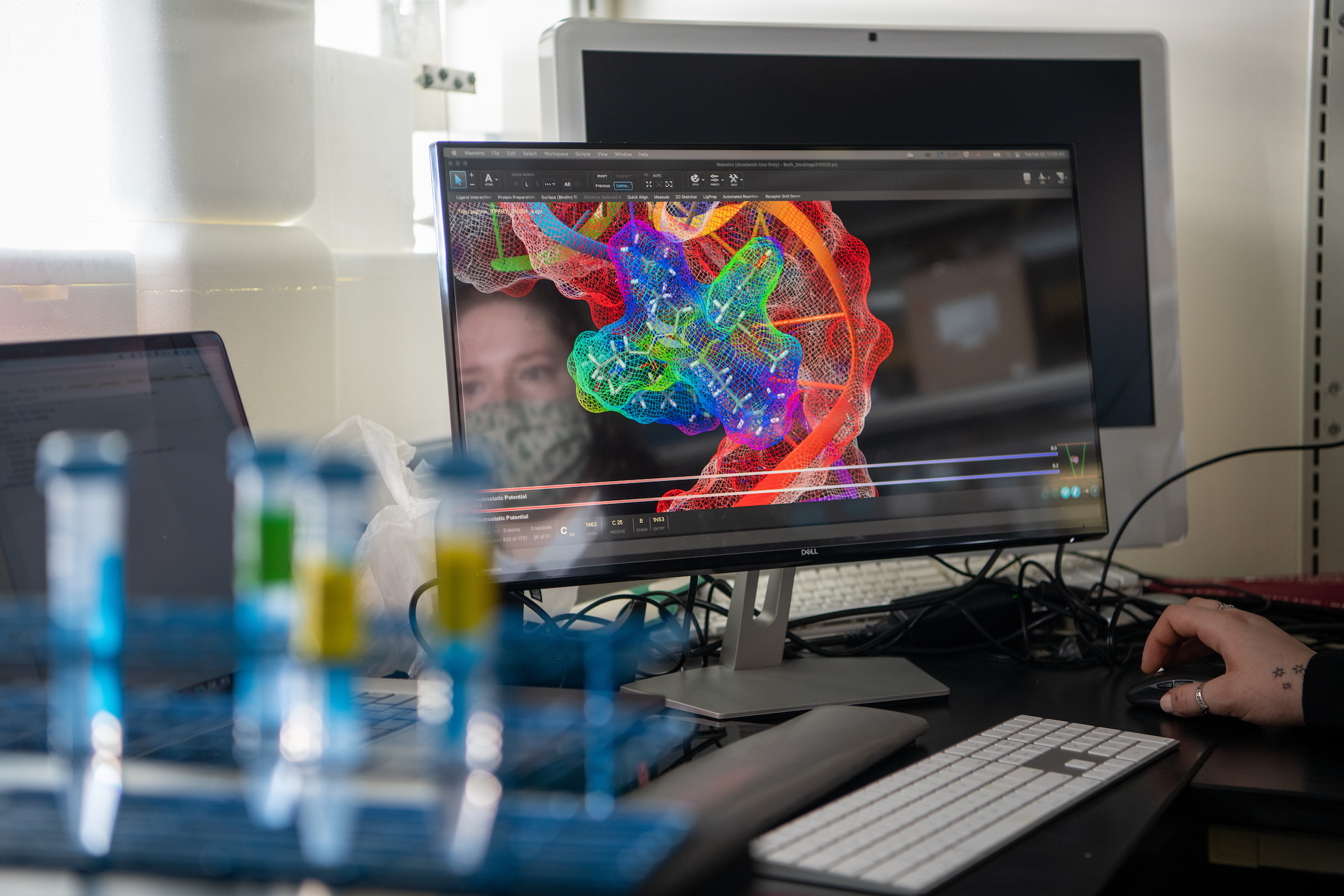
Dr. Jennifer Hines, a professor in the Department of Chemistry and Biochemistry, along with graduate and undergraduate students in her lab, have published the first structural biology analysis of a section of the COVID-19 viral RNA called the stem-loop II motif. This is a non-coding section of the RNA, which means that it is not translated into a protein, but it is likely key to the virus's replication.
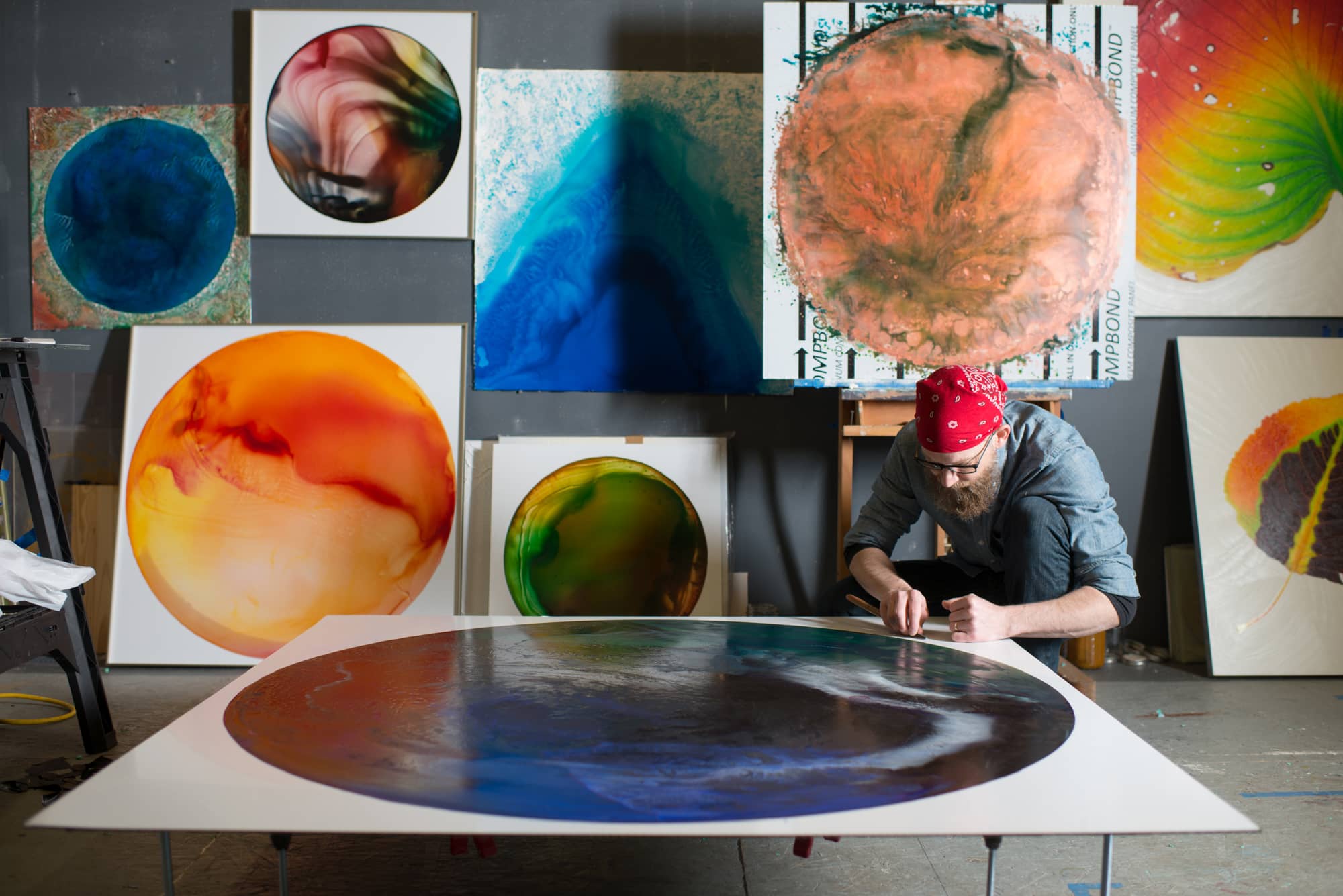
Artist and College of Fine Arts Professor of Painting + Drawing John Sabraw works on a painting at his home studio in Athens, Ohio. Sabraw uses pigment that he harvests from mining pollution nearby as a means of addressing an ongoing environmental problem in abandoned mine lands across the region.

Sabraw helps convert acid mine drainage (left) into paint that is sold and used to help pay for the restoration of waterways that have been polluted by coal mining.
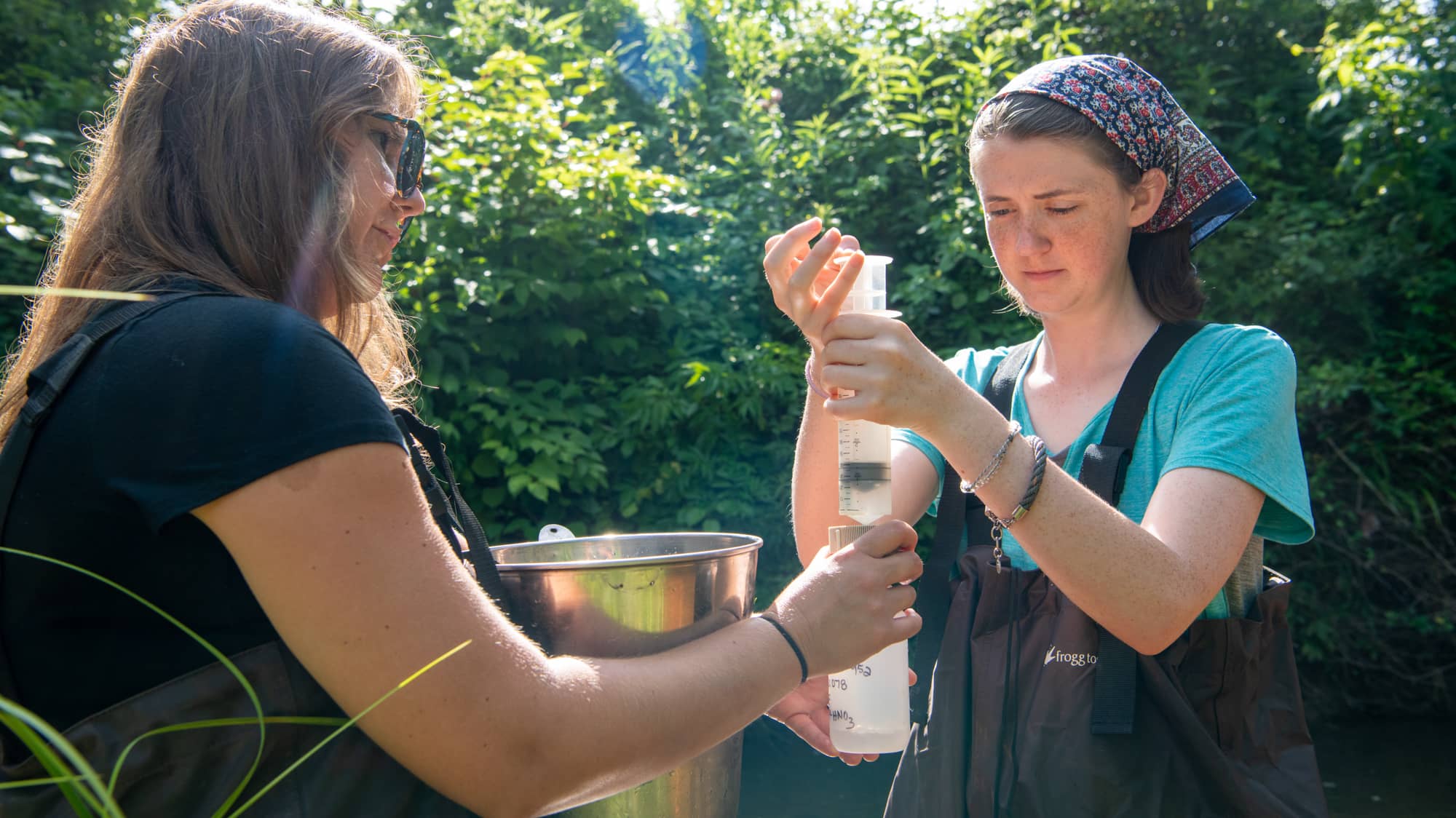
Michelle Shively (left) of Rural Action instructs undergraduate engineering student Liz Myers on how to evaluate stream health at an acid mine drainage site near Athens.
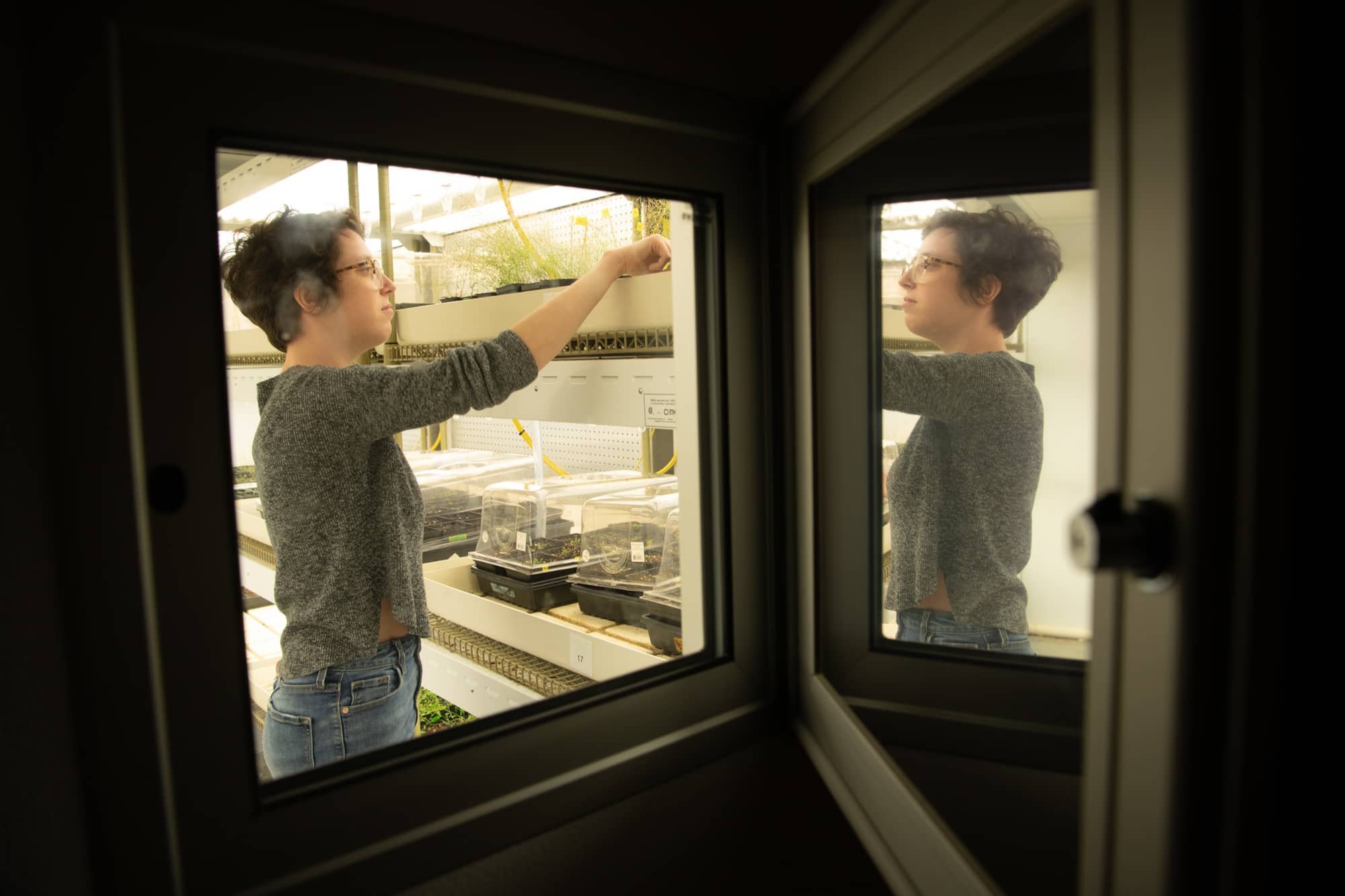
As NASA preps for long-distance spaceflights to the moon and Mars, it has tapped Arts and Sciences Professor of Environmental and Plant Biology Sarah Wyatt, Ph.D., to advance our understanding of how plant life adapts outside of Earth. Wyatt, with the help of students like Ava Heller, pictured here, will send plants to the International Space Station for the third time.
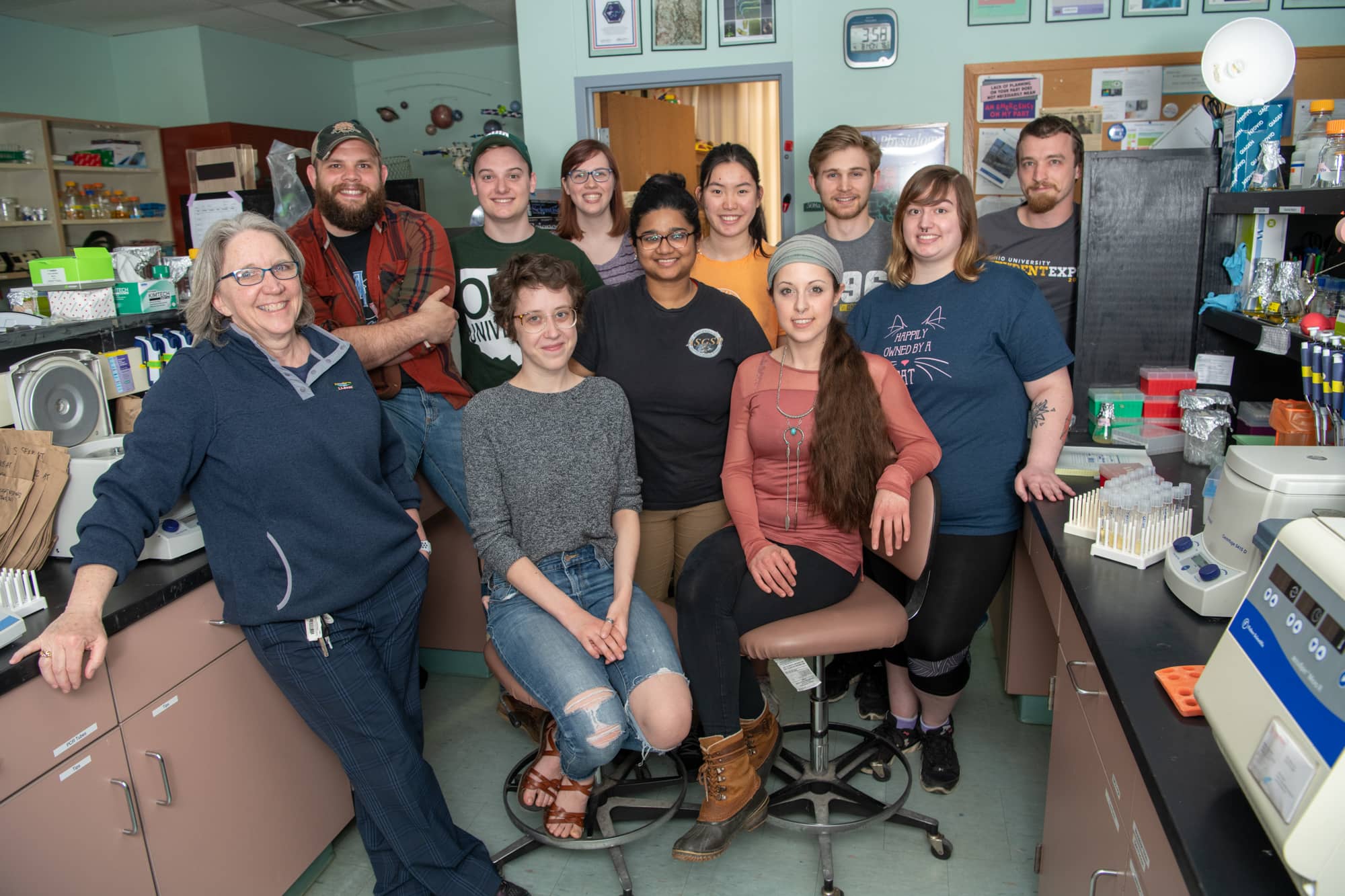
Sarah Wyatt, Ph.D., left, is photographed with her team in her lab at Porter Hall. Wyatt is an internationally respected researcher in the field of plant gravity biology and was recently named a fellow of two national organizations — the American Society of Plant Biologists as well as the inaugural cohort of Sigma Xi Fellows.
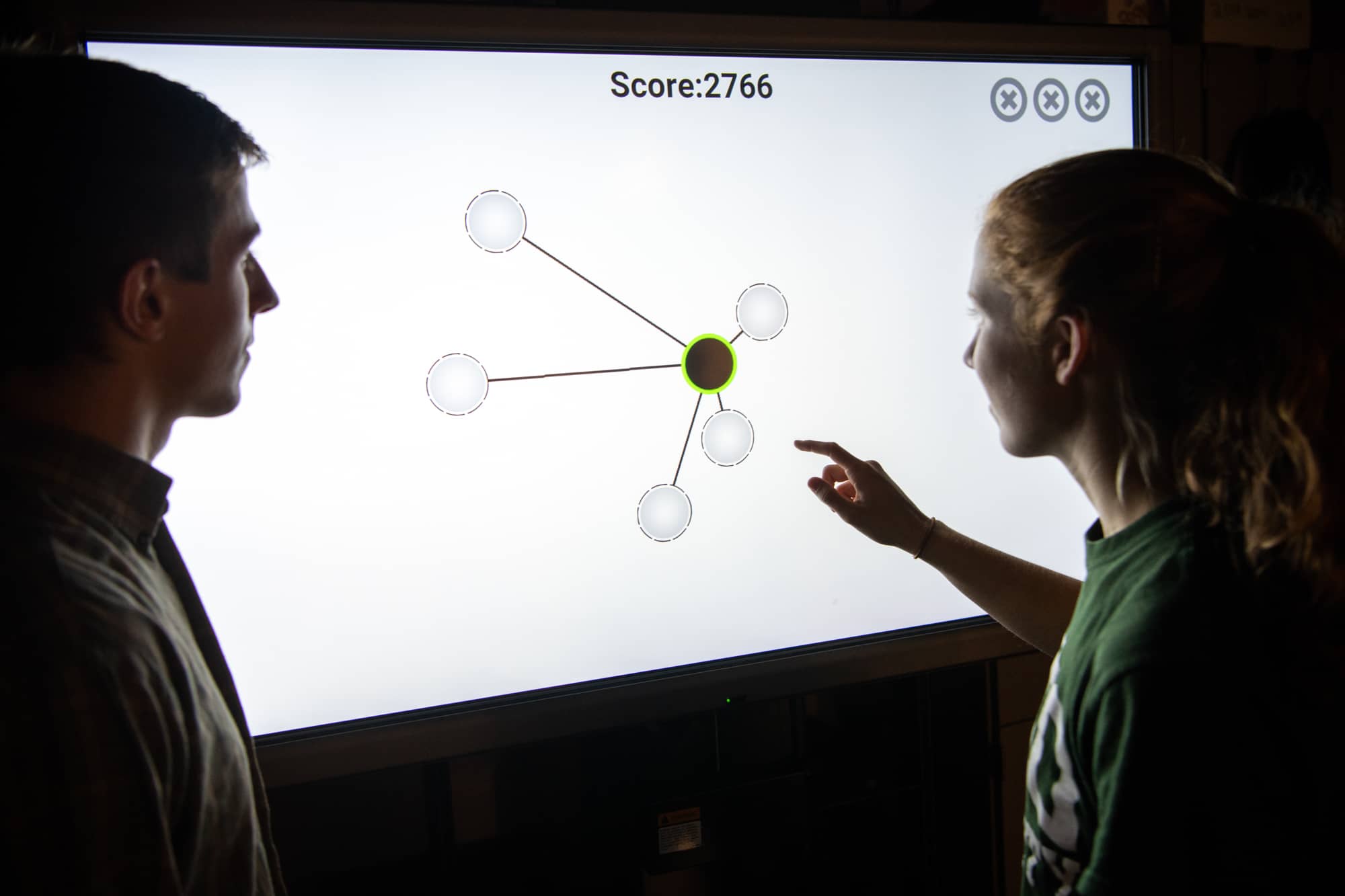
Health Sciences and Professions students participate in research in Dr. Dustin Grooms’ lab.
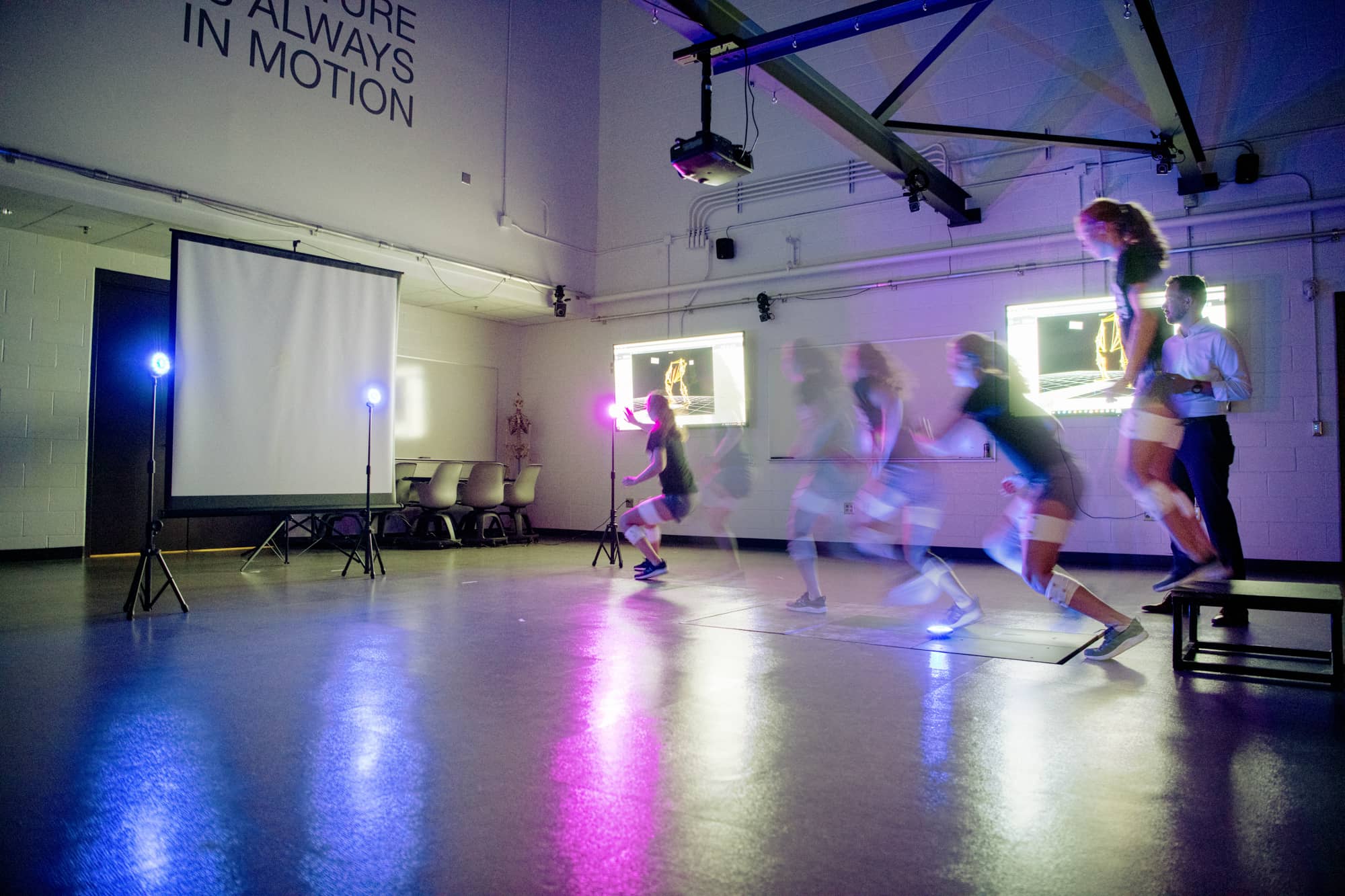
Associate Professor of Physical Therapy Dustin Grooms, Ph.D., studies how proprioception, the brain's sense of where the body is in space, changes after a musculoskeletal injury, and how improving it can lead to better patient outcomes.
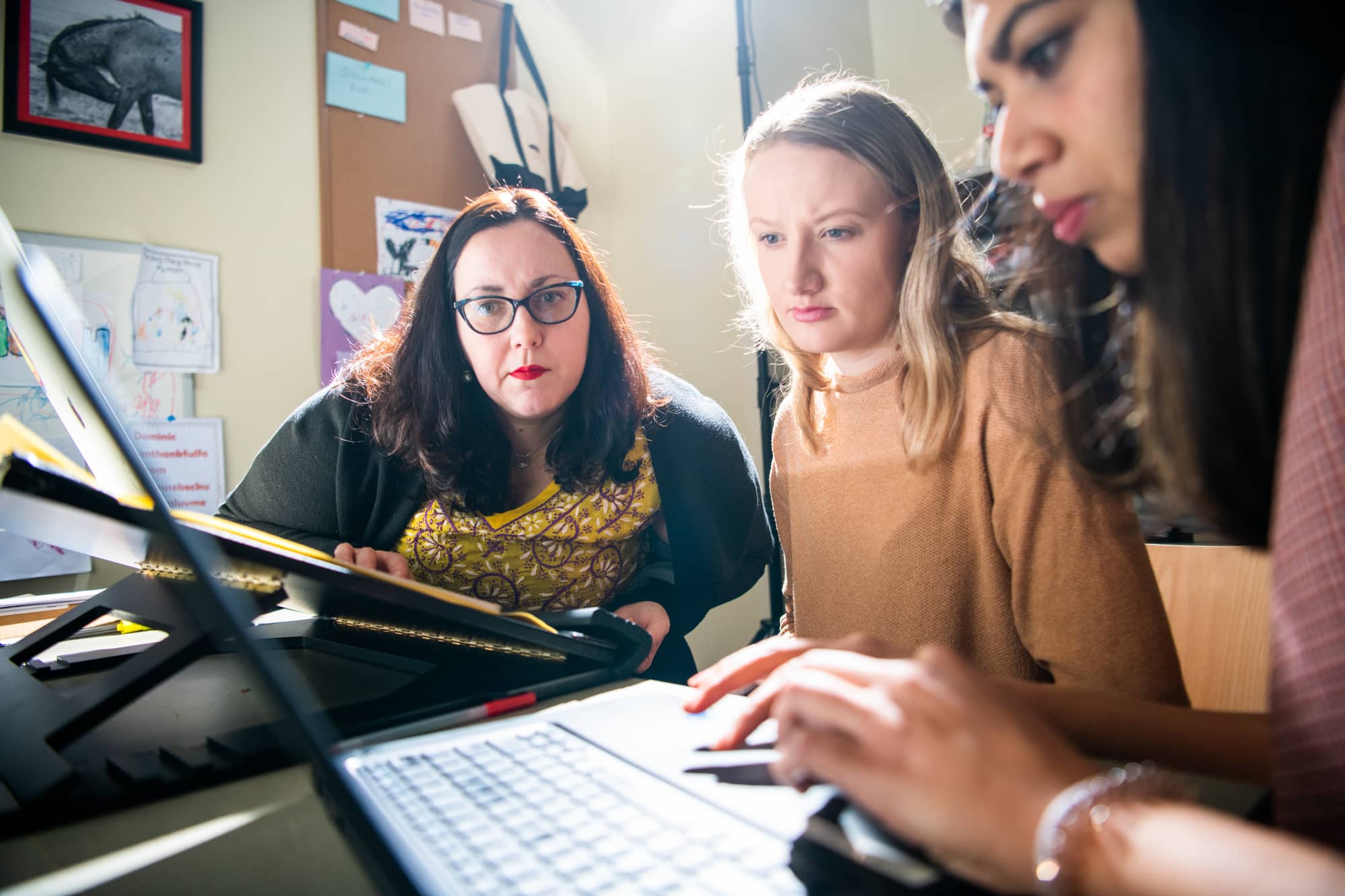
Scripps College of Communication Associate Professor Victoria LaPoe, Ph.D., researches media diversity, digital media and marketing strategy with students in her office in the Scripps College of Communication.
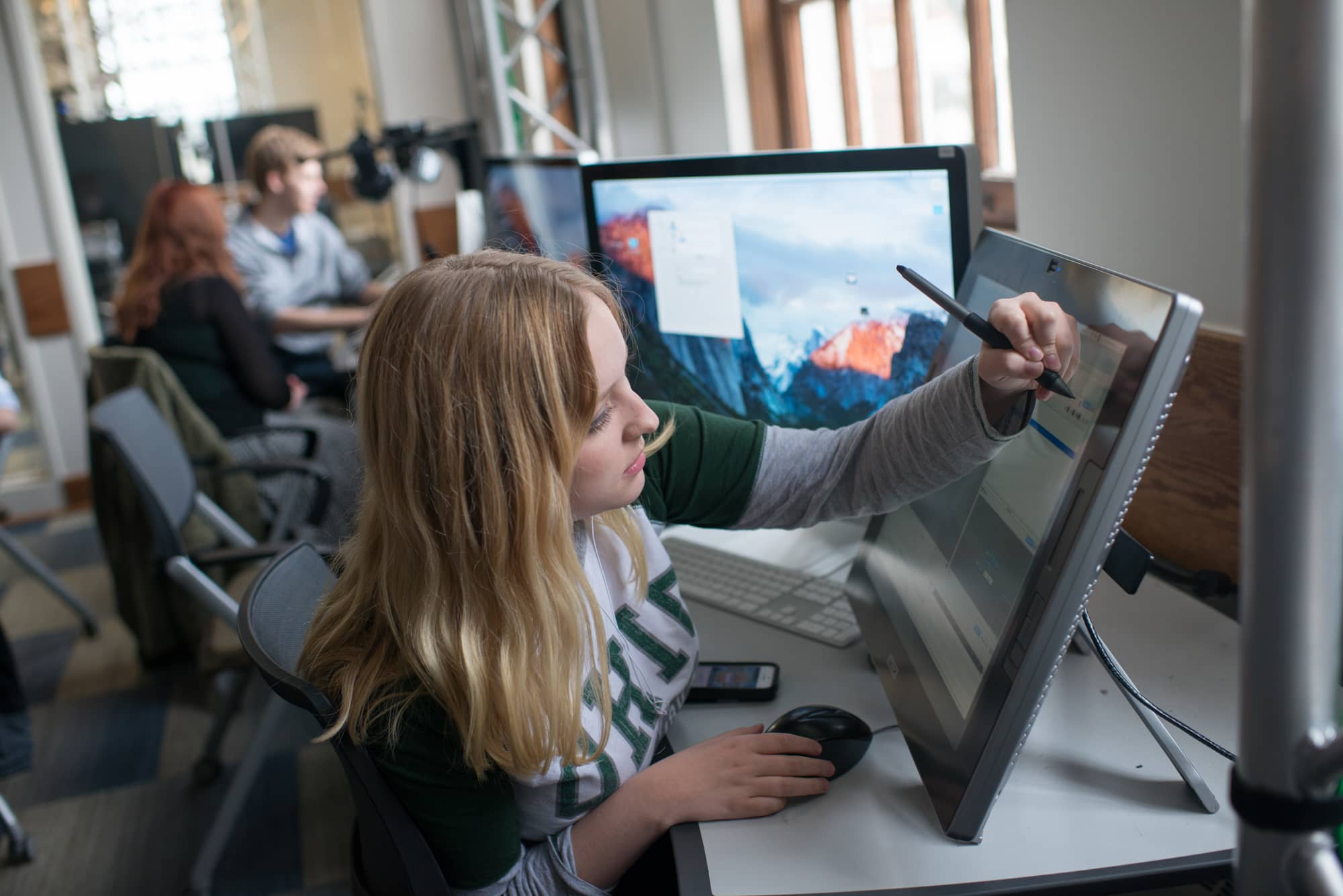
A student works on a touch-screen monitor in the GRID Lab. The GRID Lab has been awarded numerous grants and contracts from state and federal agencies including the Department of Homeland Security, Central Ohio Urban Area Security Initiative, the Ohio Board of Regents, Department of Energy, Department of Labor, and the National Institutes of Health.
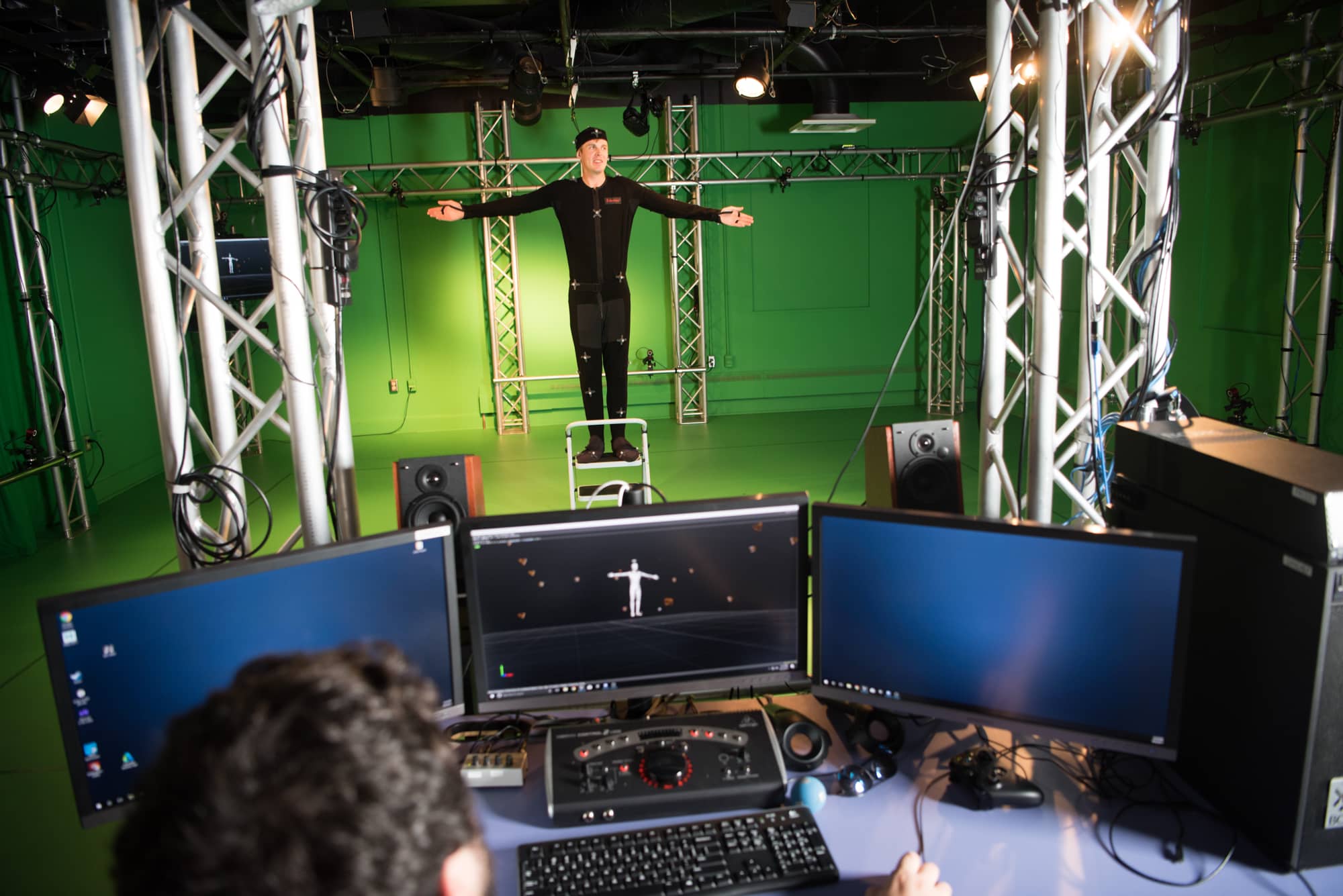
The Game Research and Immersive Design (GRID) Lab, an initiative of Ohio University's Scripps College of Communication, was developed by the School of Media Arts and Studies faculty and staff to provide the Appalachian Ohio region with training, education, and an opportunity to develop technical and creative skills with digital game technology.
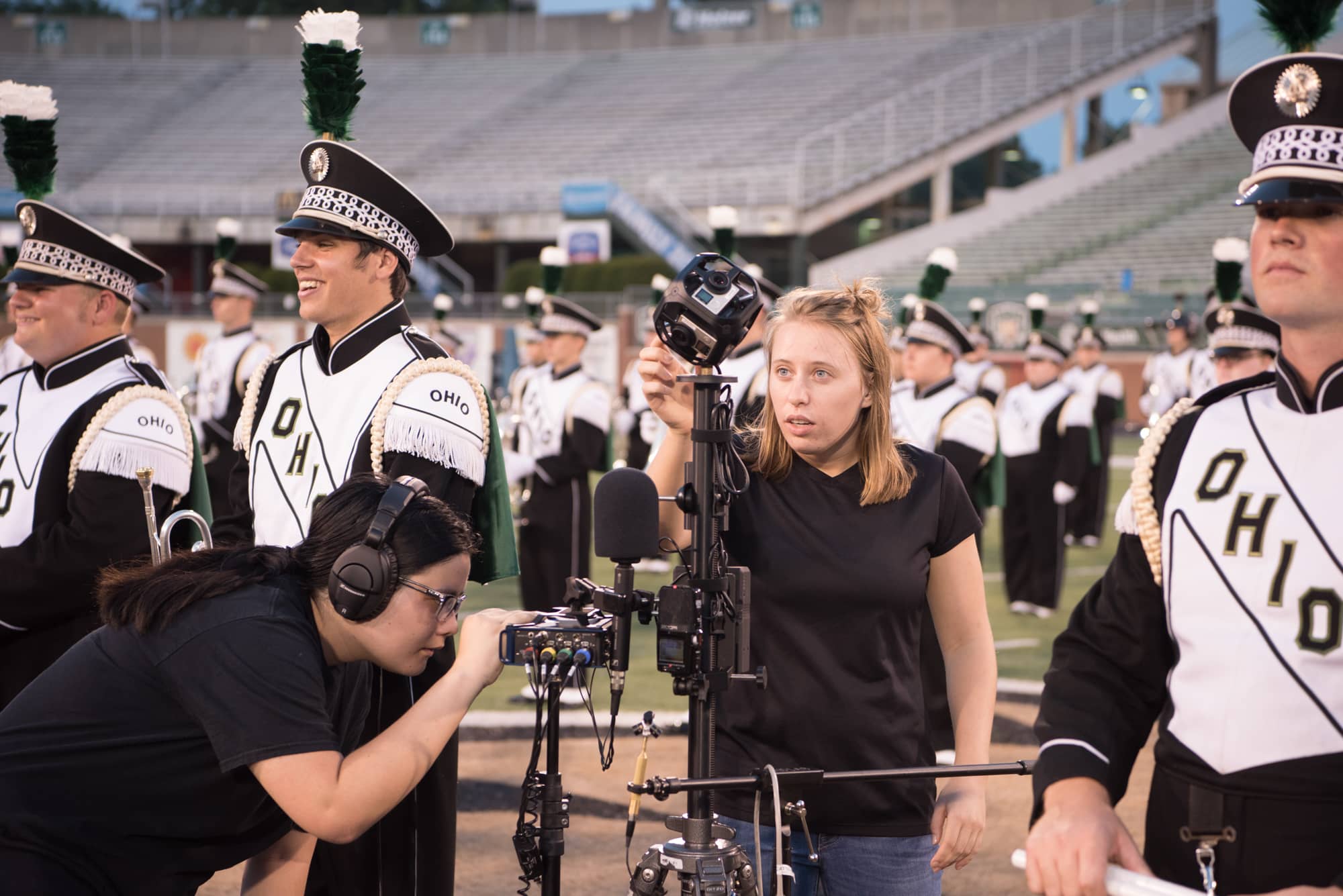
Media Arts undergraduate students record the Marching 110 using 360-degree video cameras.
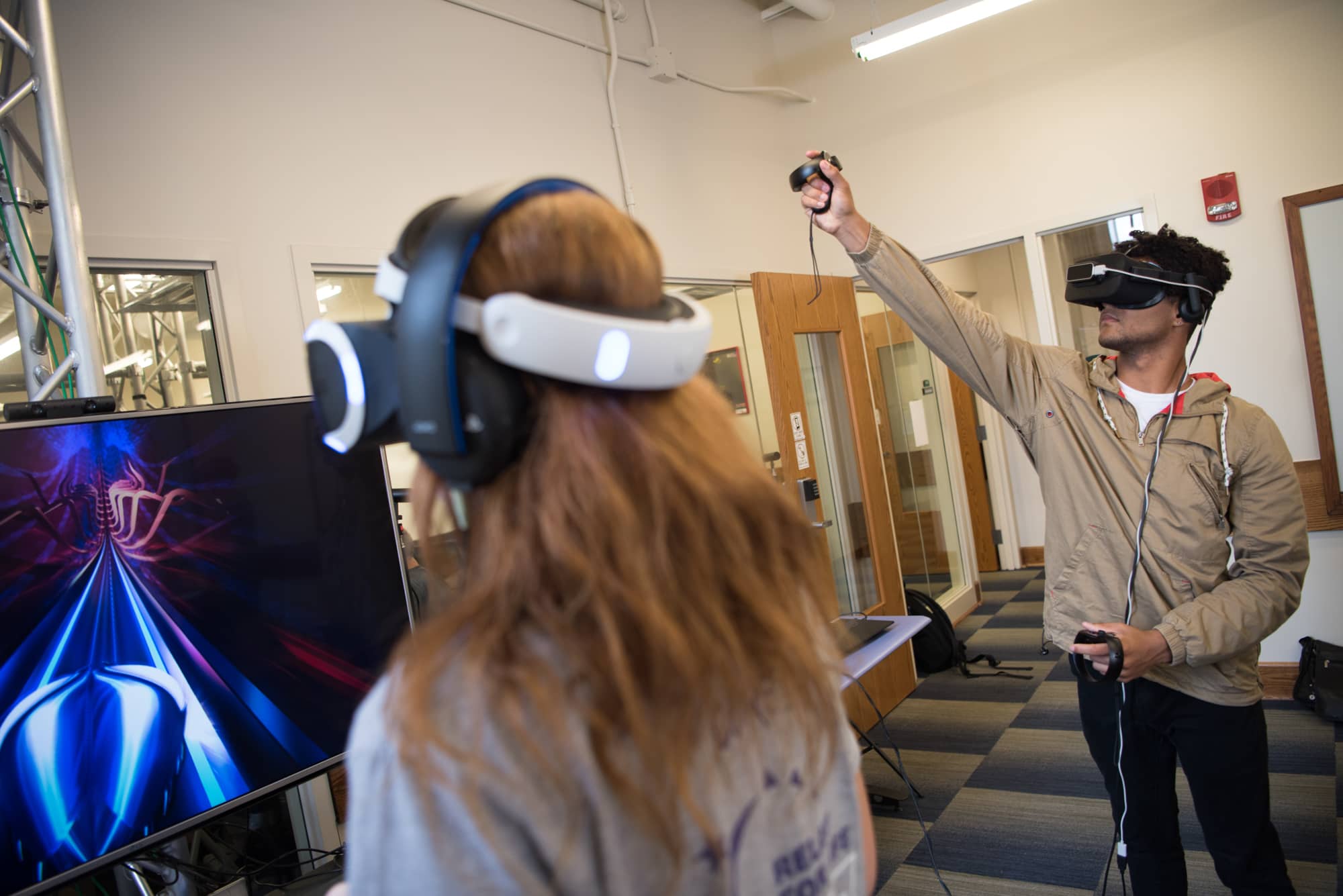
Students gain experience with virtual and augmented reality technologies at GRID Lab.
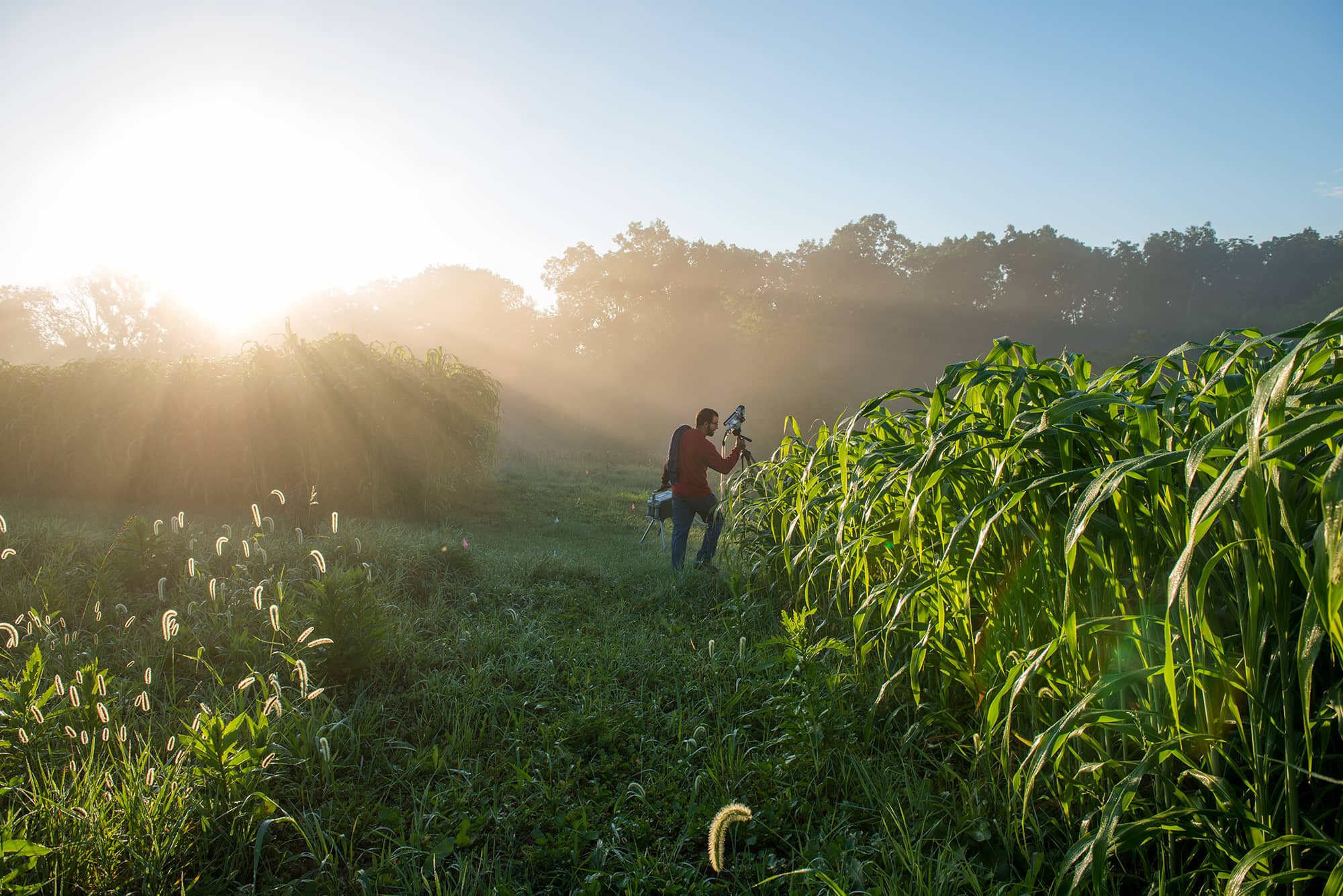
Graduate student Jonathan Grennell measures photosynthesis produced by a sorghum plant at a research plot at The Ridges. Voinovich School of Leadership and Public Service Associate Professor Sarah Davis, Ph.D., and her students are measuring the carbon footprints of a variety of species of plants for potential applications as a source of biofuel.
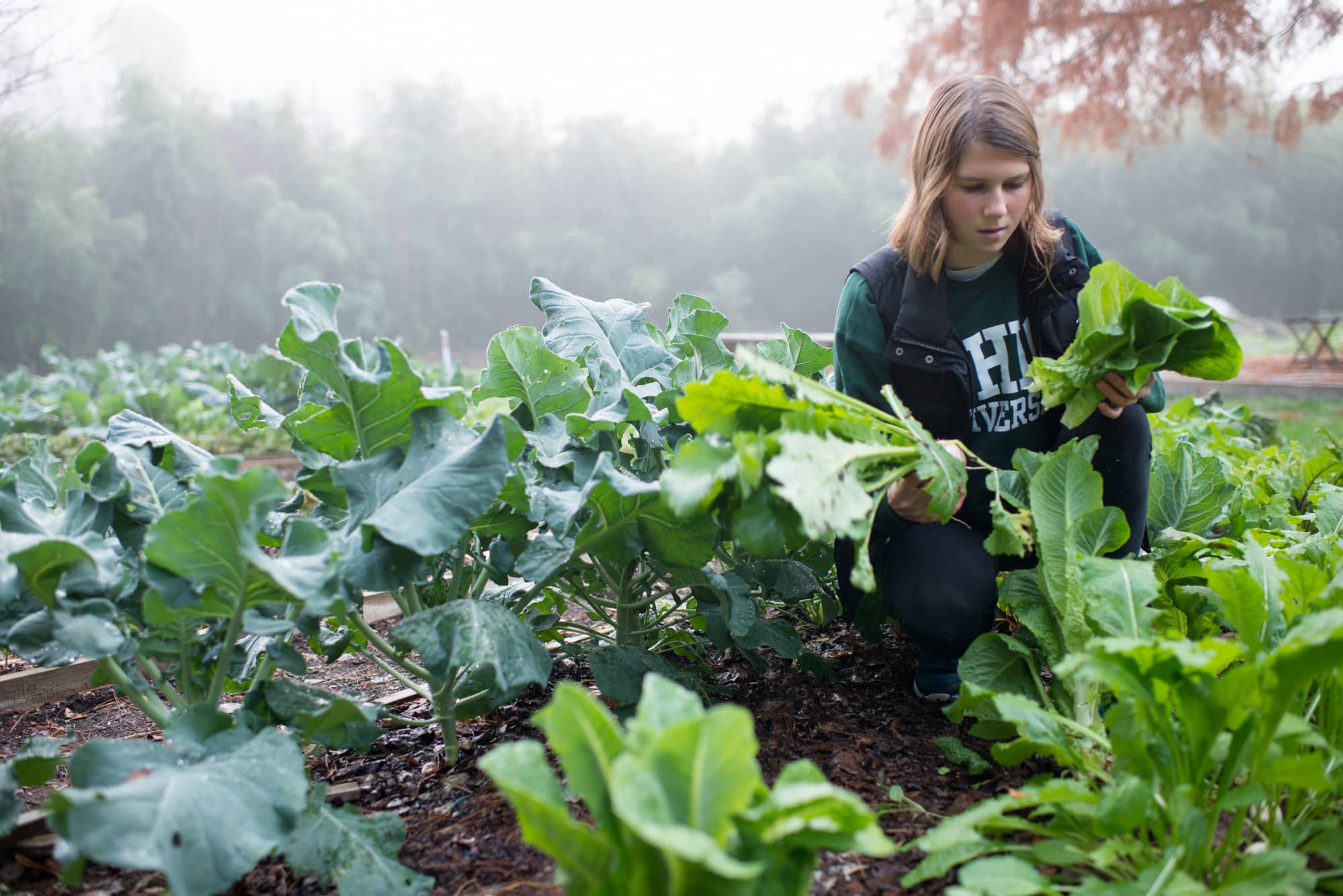
A student harvests lettuce at the OHIO Student Farm.
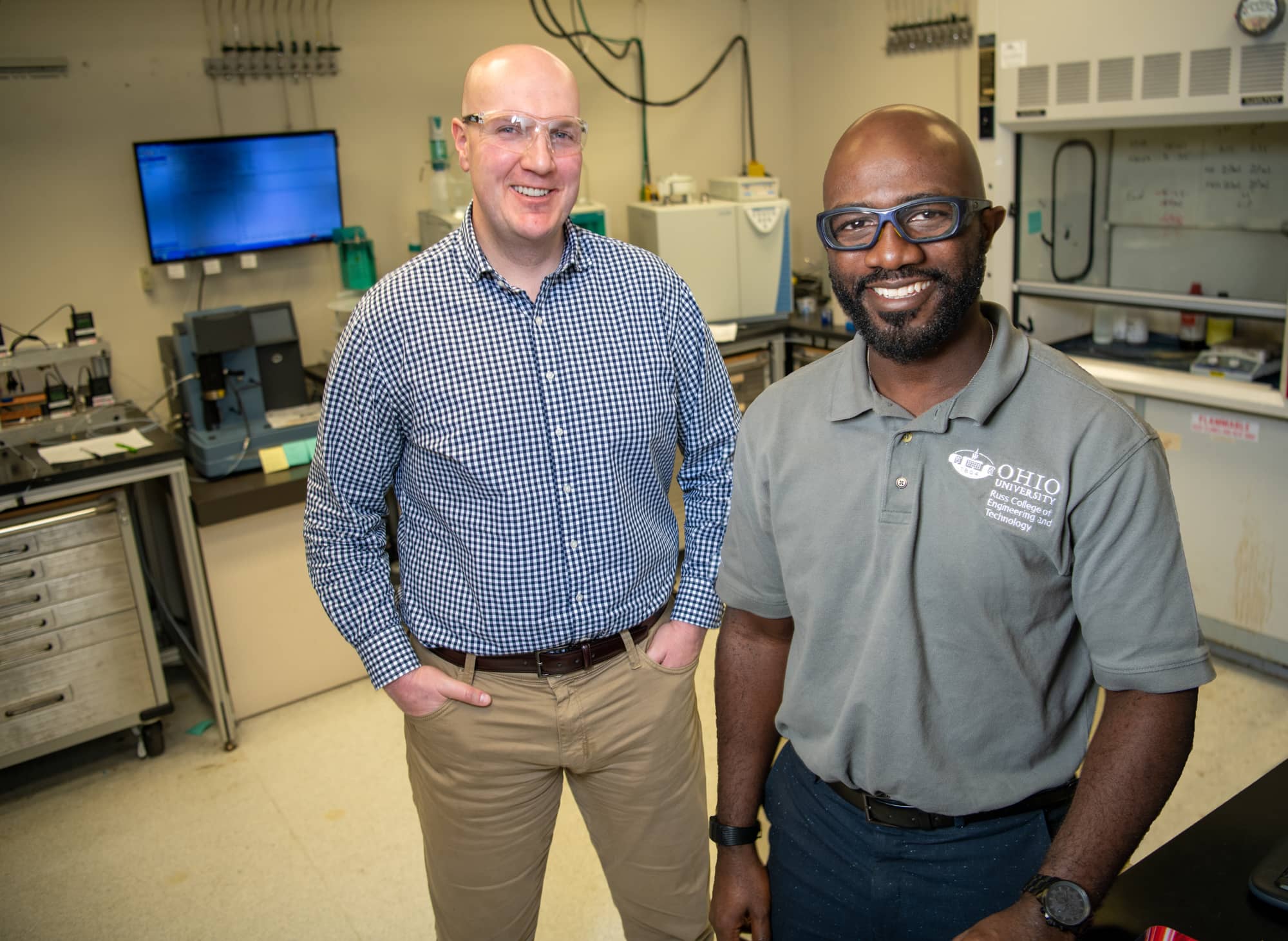
Russ College of Engineering professors Jason Trembly, Ph.D., left, and Damilola Daramola, Ph.D., were recently awarded more than $1 million in grants to develop sustainable construction materials.
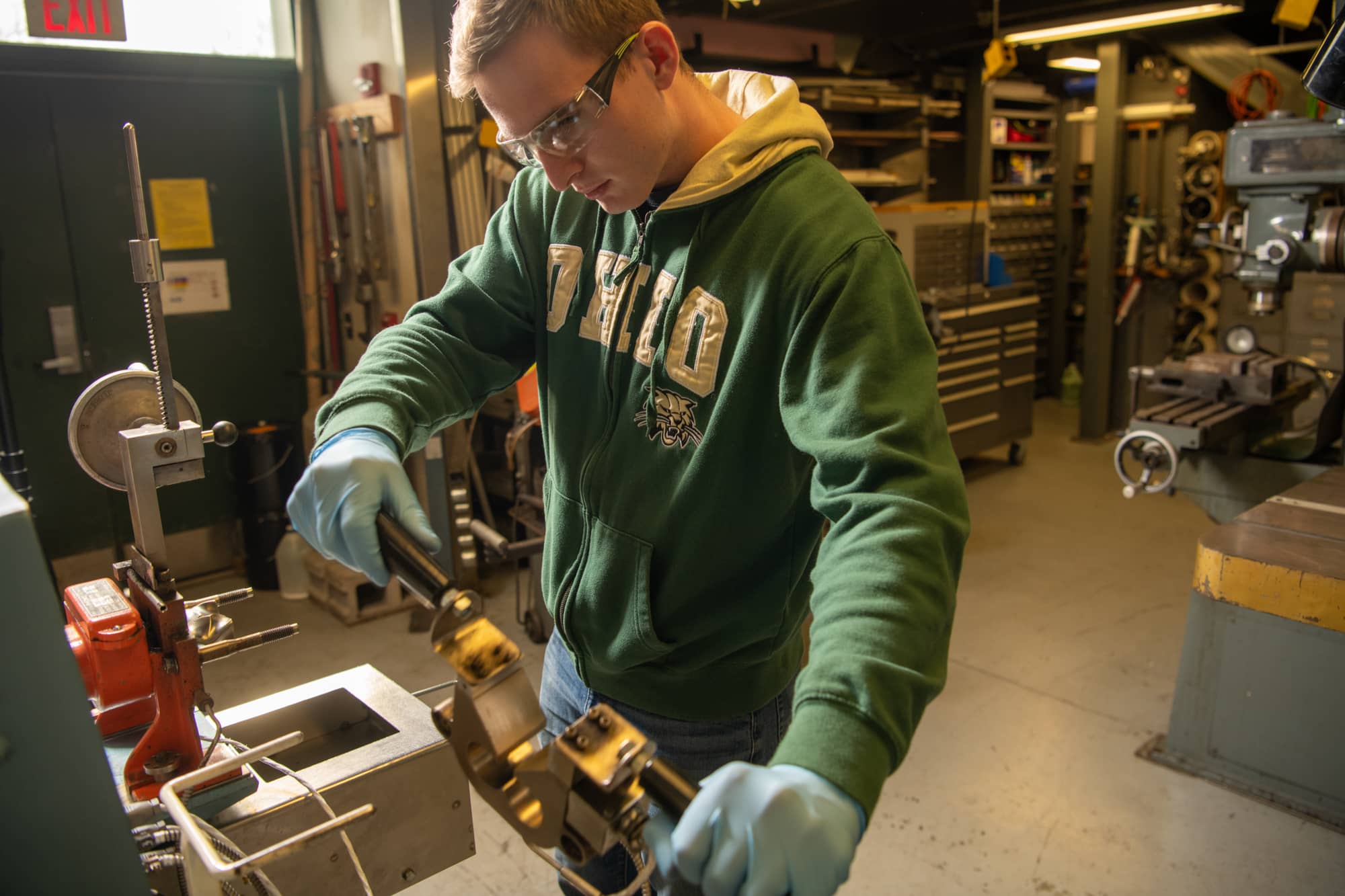
An undergraduate engineering student researches new sustainable construction materials in the Institute for Sustainable Energy and the Environment in the Russ College of Engineering and Technology.
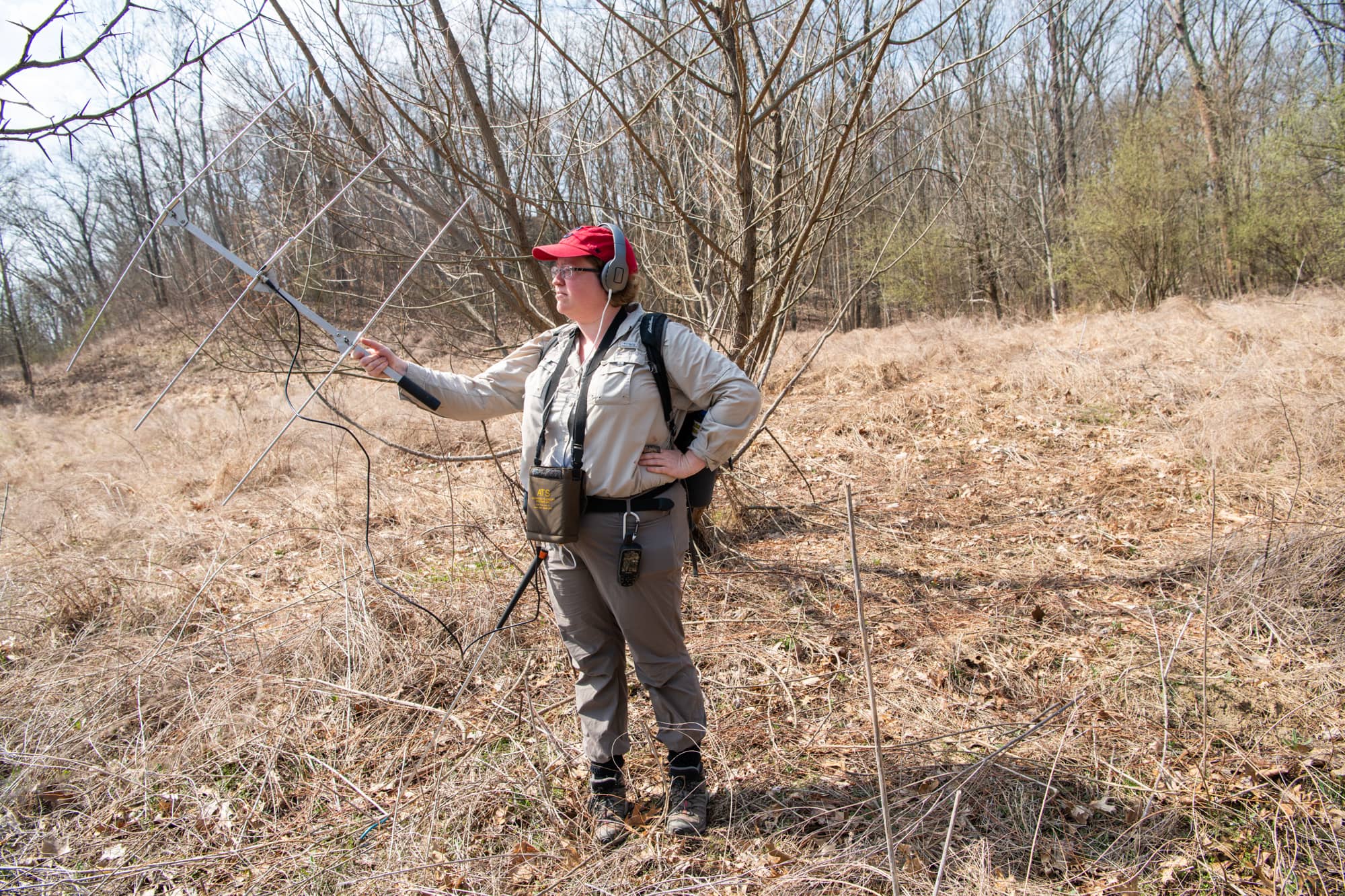
A Conservation Ecology Lab student tracks turtles to better understand the impact of a new roadway on a local turtle population.
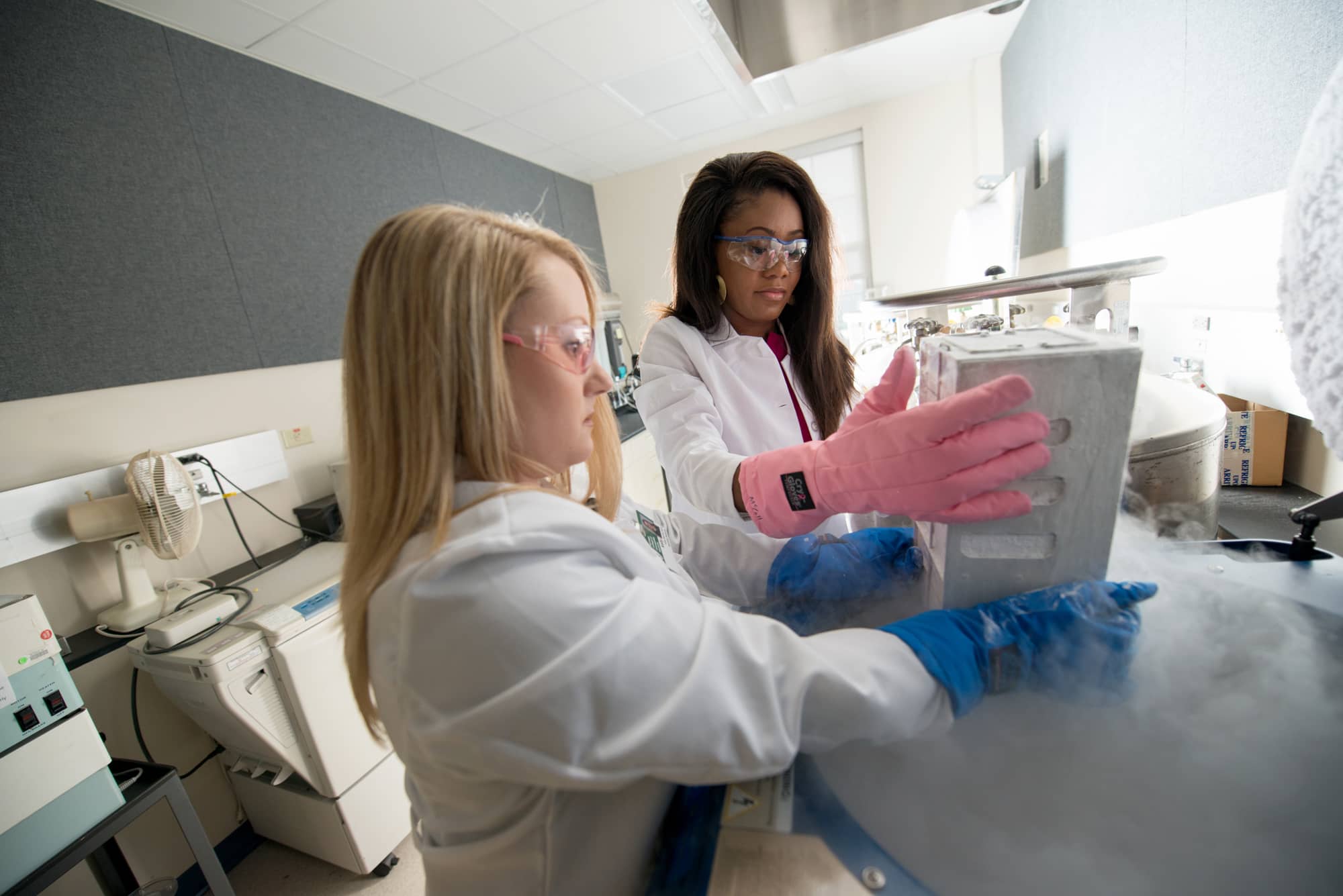
Heritage College Professor Kelly McCall, Ph.D., and student LaDonya Jackson work in the Academic and Research Center. McCall, along with Russ College professor Douglas Goetz, Ph.D., received a grant to investigate possible treatments to mitigate the severity of COVID-19.
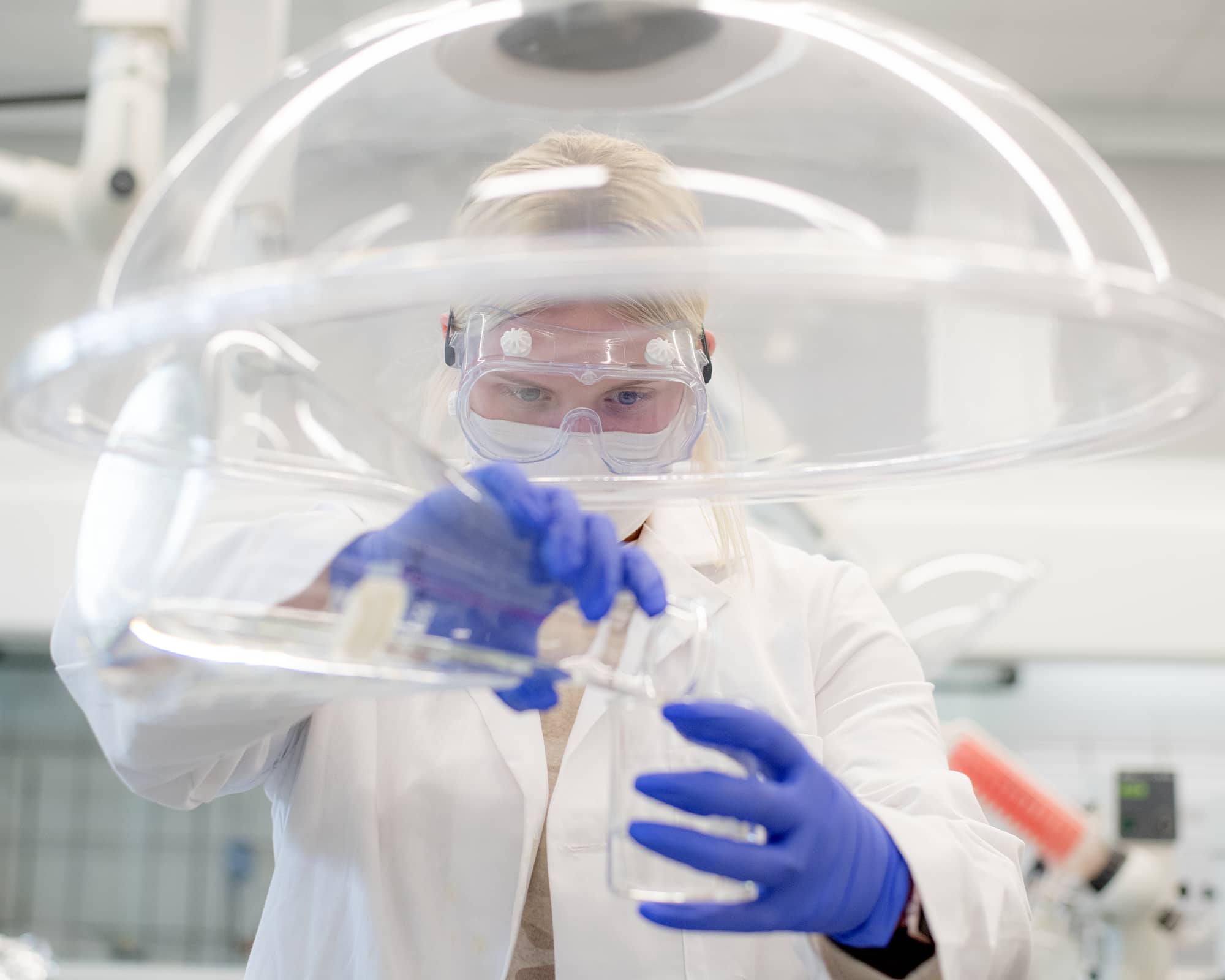
In late 2020, the University wrapped up construction on a 34,000-square-foot Chemistry Building, converting a parking lot near Clippinger Laboratories and Emeriti Park into a center for groundbreaking learning and research for future generations of scientists and scholars.
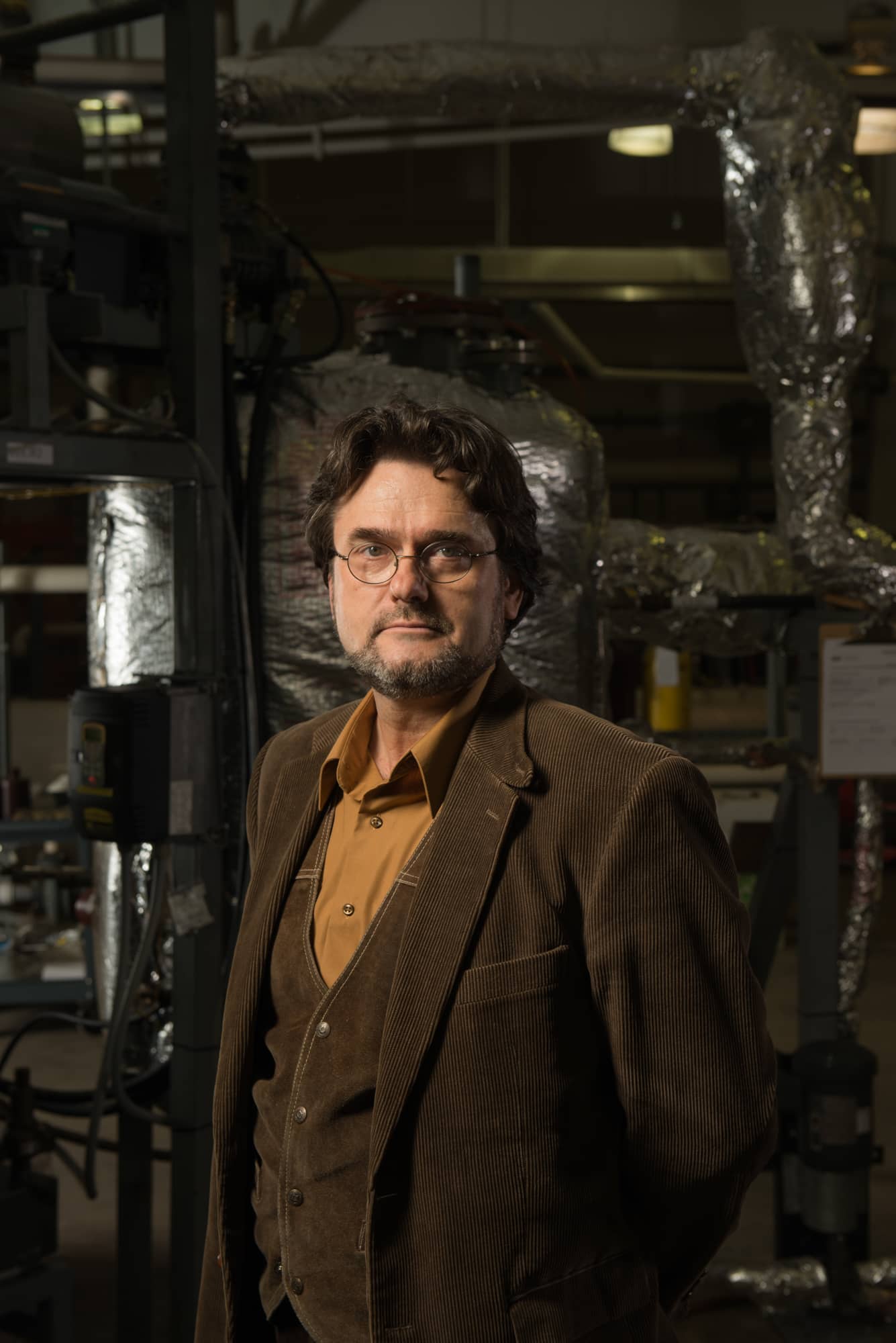
Ohio University Distinguished Professor and Russ Professor of Chemical Engineering in the Department of Chemical and Biomolecular Engineering Srdjan Nesic, Ph.D., has published extensively in the field of corrosion, including 18 articles in books, some of which are reference sections in the best-known corrosion handbooks.
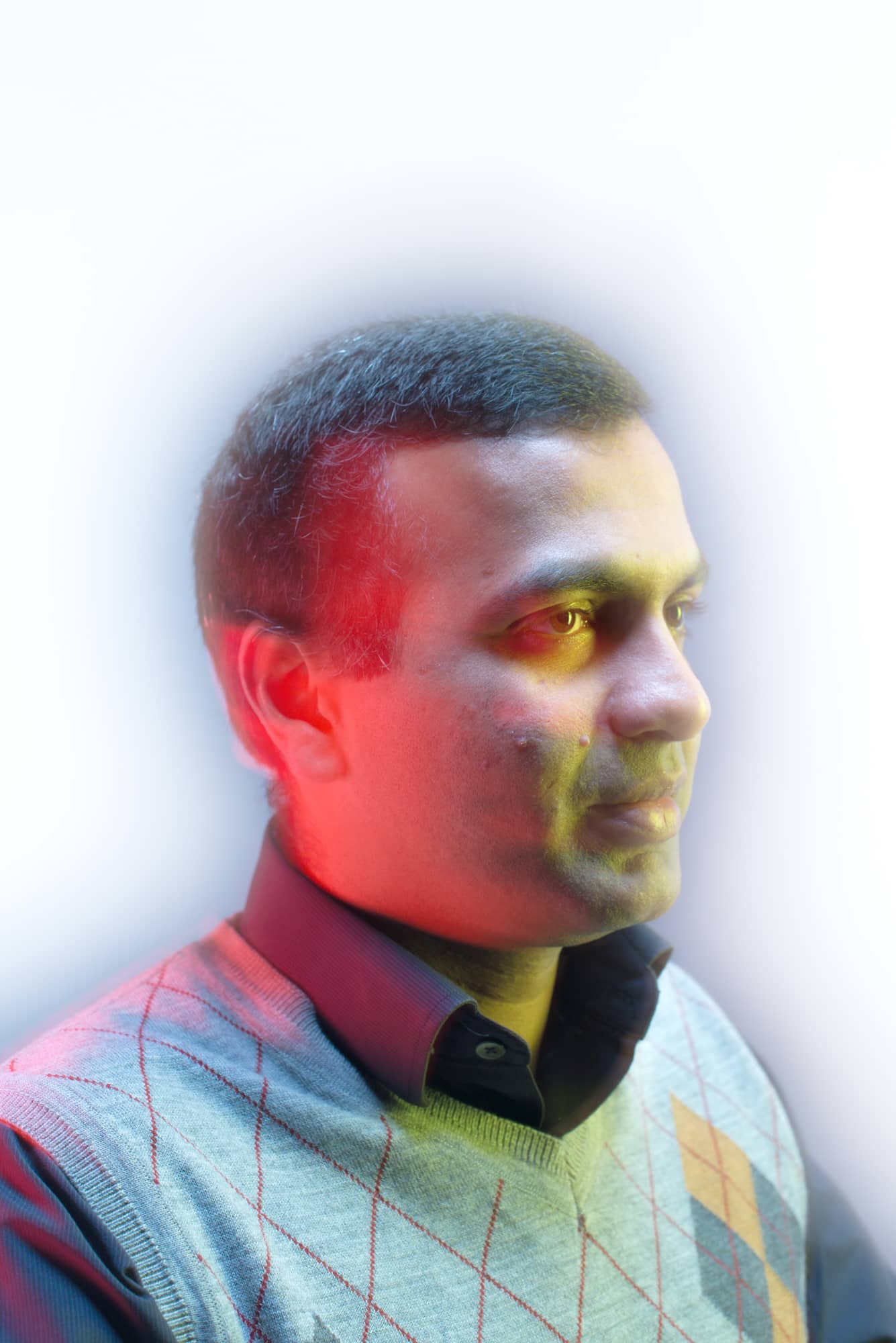
Russ College Chair of Electrical Engineering and Computer Science Avinash Karanth, Ph.D., explores the convergence of optics and high-performance computers. Karanth has published more than 60 items in IEEE and OSA peer-reviewed conferences and journals in the field of computer architectures and optical interconnection networks.
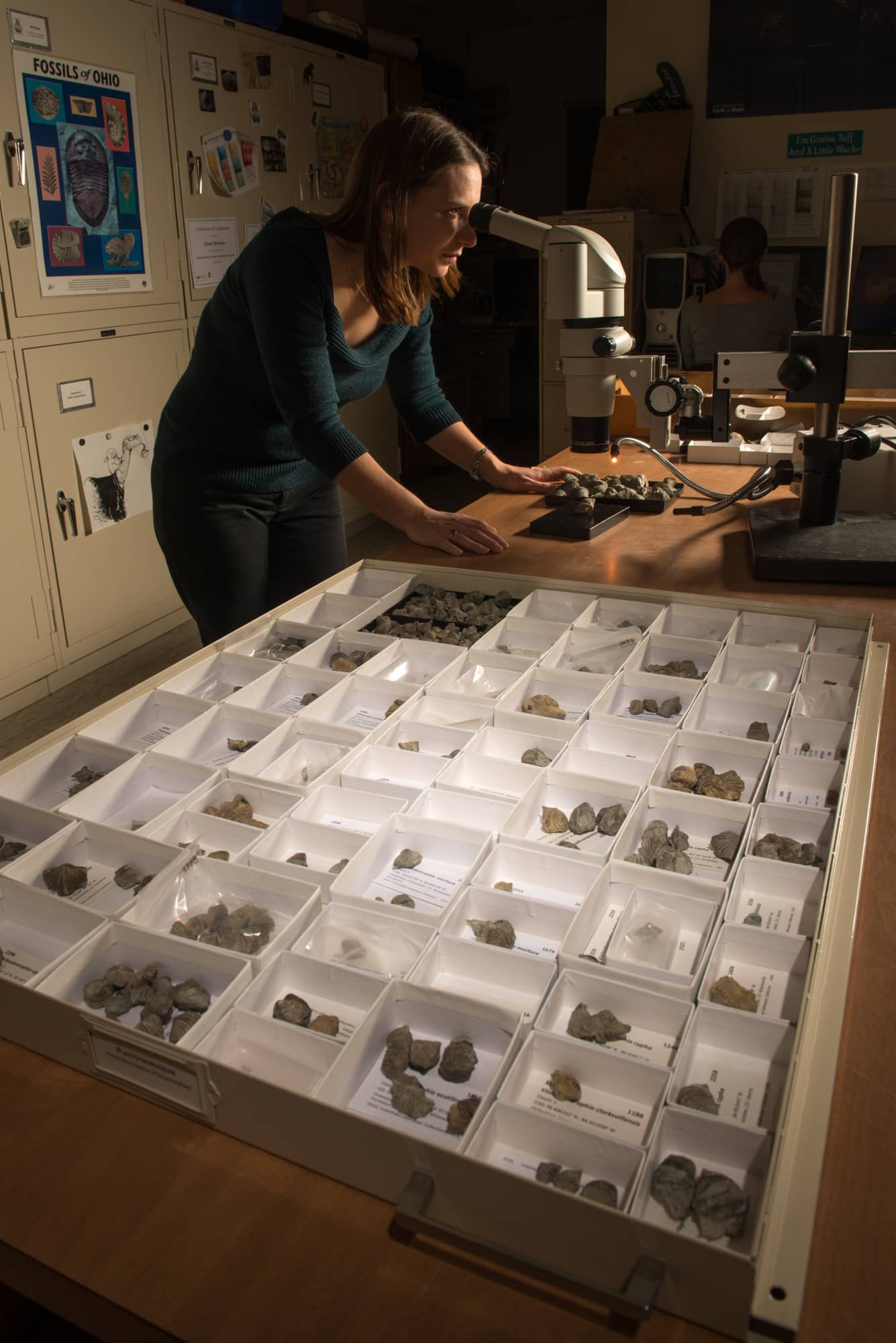
Arts and Sciences Professor of Geological Sciences Alycia Stigall, Ph.D., researches the influence of biogeography and paleoecology on macroevolutionary phenomena. She recently published a study that early species developed much faster than previously thought during the Ordovician Radiation.
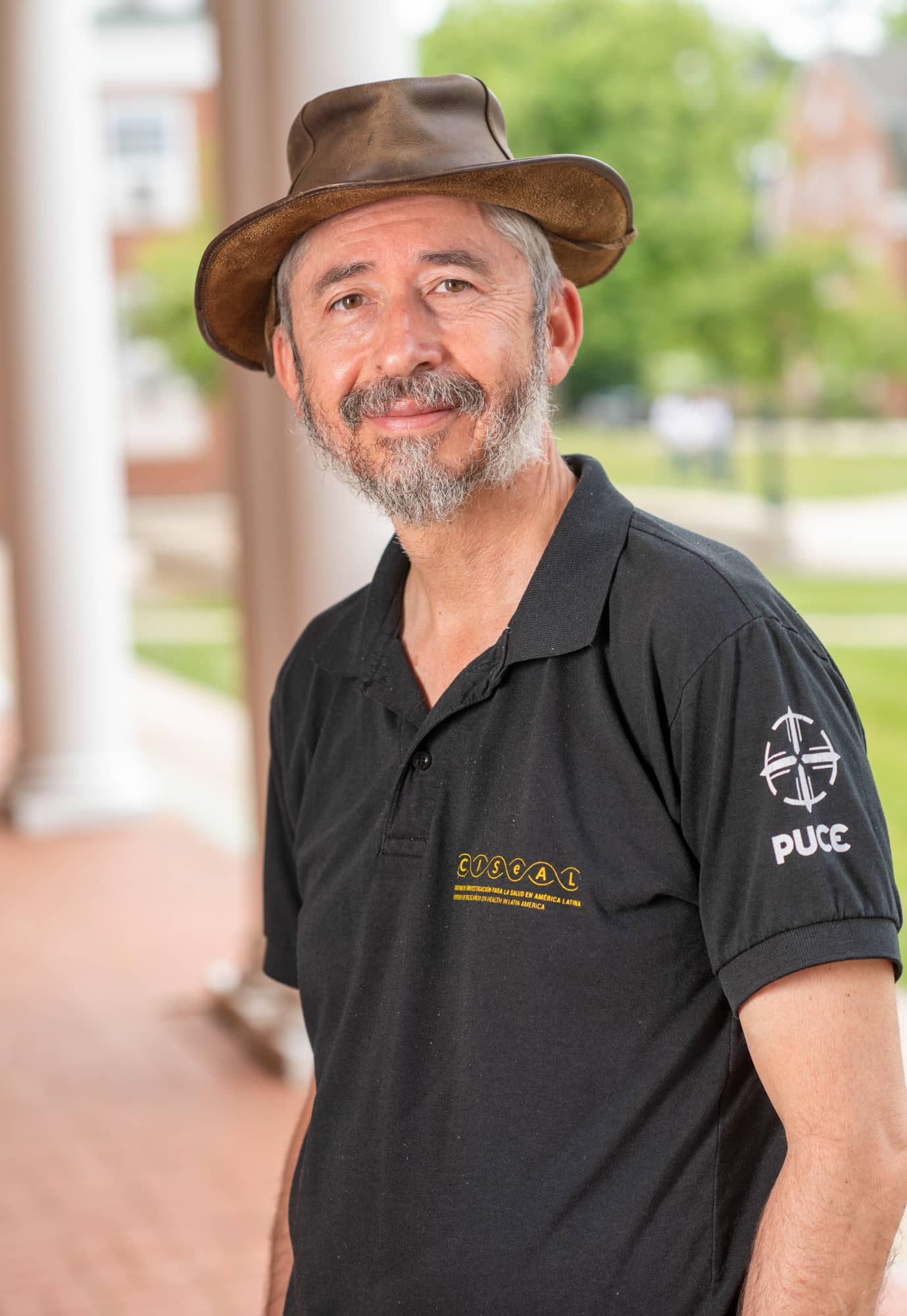
The Heritage College’s Mario Grijalva, Ph.D., director of the Infectious and Tropical Disease Institute and professor of microbiology, is an internationally-renowned expert on the spread of infectious diseases and among the world’s premier experts on Chagas disease, which affects millions of people in South and Central America and has recently spread to the U.S. and Europe.
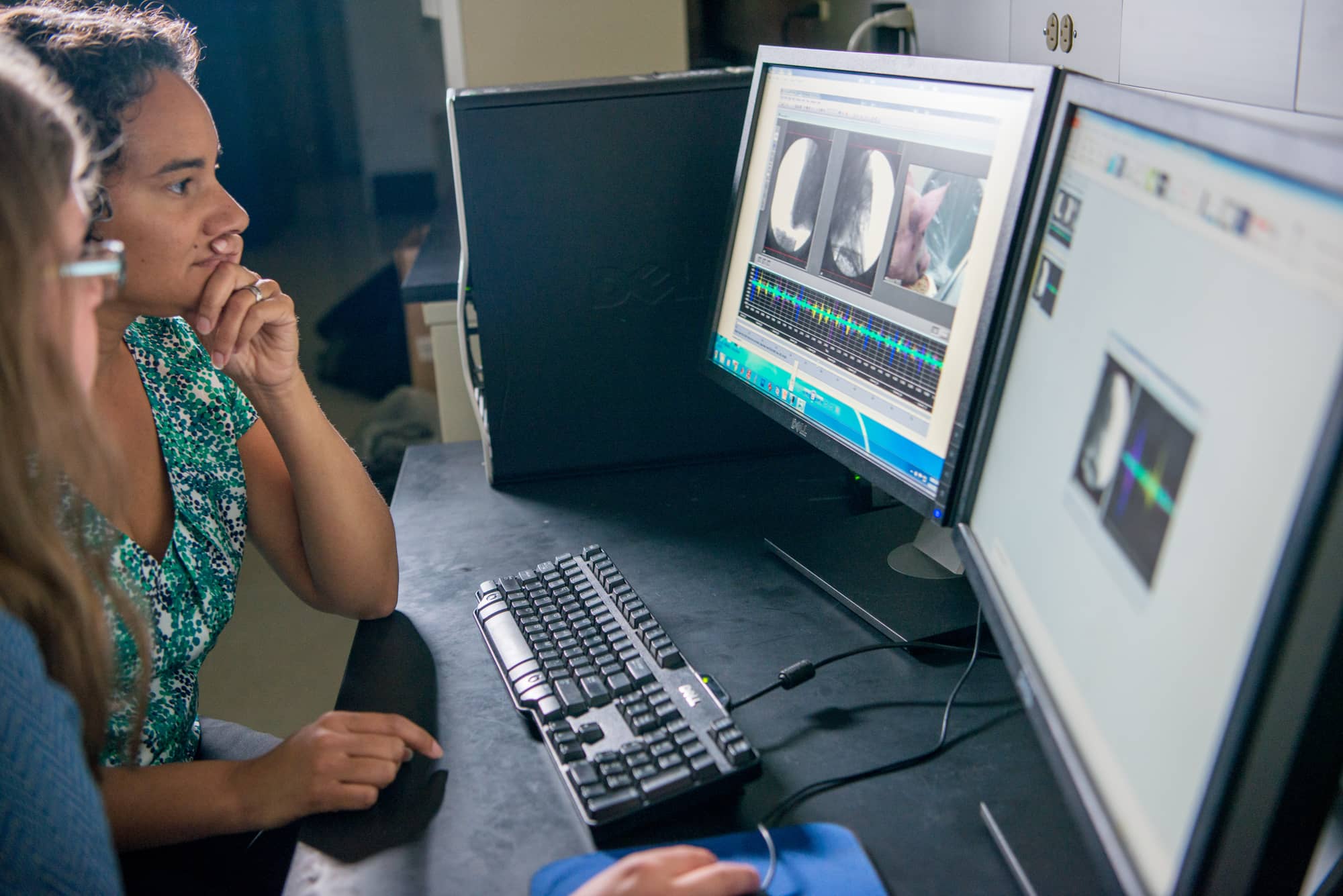
Heritage College Professor of Anatomy Susan Williams, Ph.D., studies the functional morphology, biomechanics and physiology of feeding in vertebrates to understand the factors driving evolutionary changes in the skull.
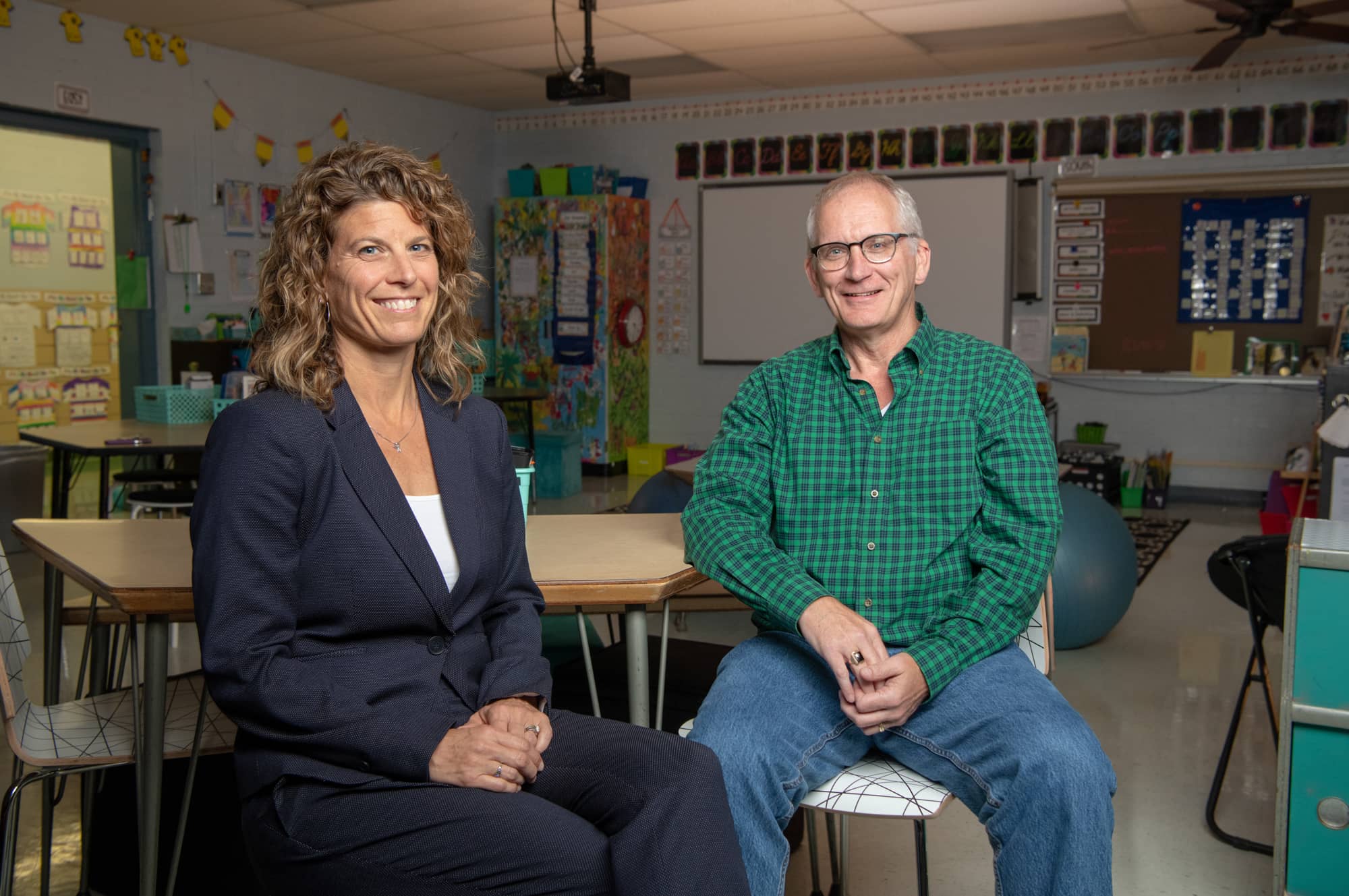
Arts and Sciences Professor of Psychology Julie Owens, Ph.D., and Distinguished Professor of Psychology Steven Evans are studying the effectiveness of a new professional development program for elementary school teachers. The program is designed to assist educators with implementing strategies to help children with emotional and behavioral disorders to succeed in school.
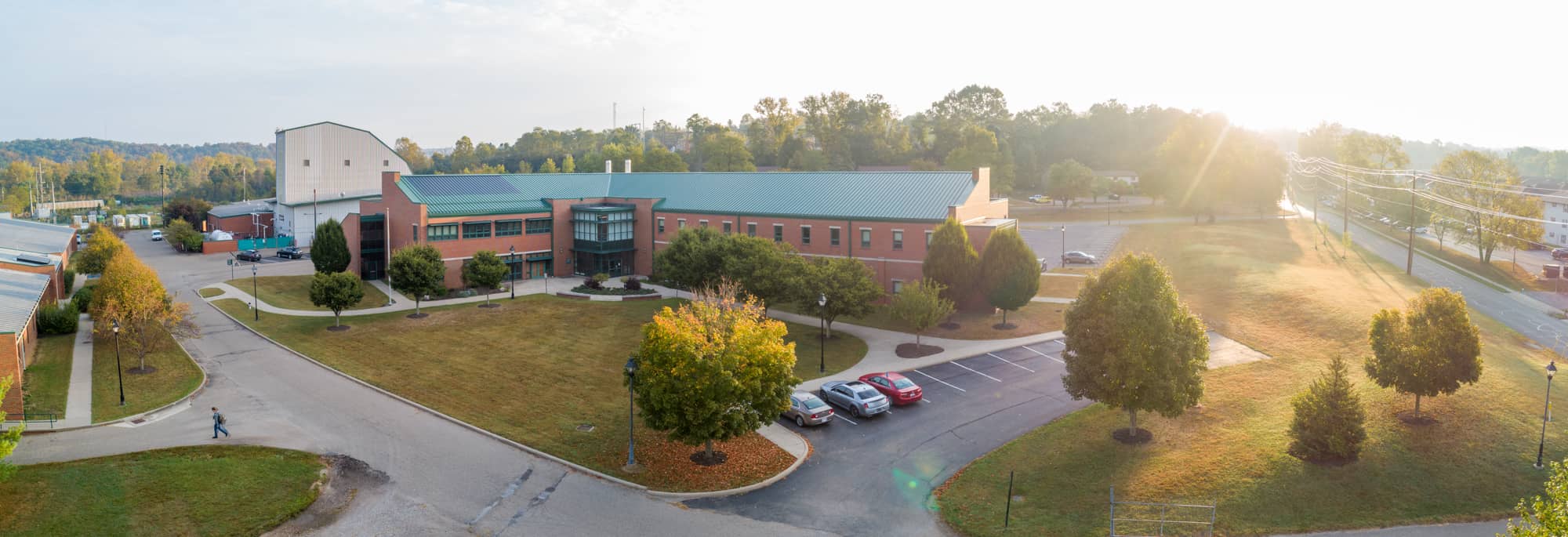
Ohio University researchers, with support from entities like TechGROWTH Ohio and the Innovation Center (pictured), have the opportunity to commercialize their work. For example, researchers founded AEIOU Scientific, now known as OsteoDX, to develop a device that can check the strength of bones easily and non-invasively using vibration analysis.
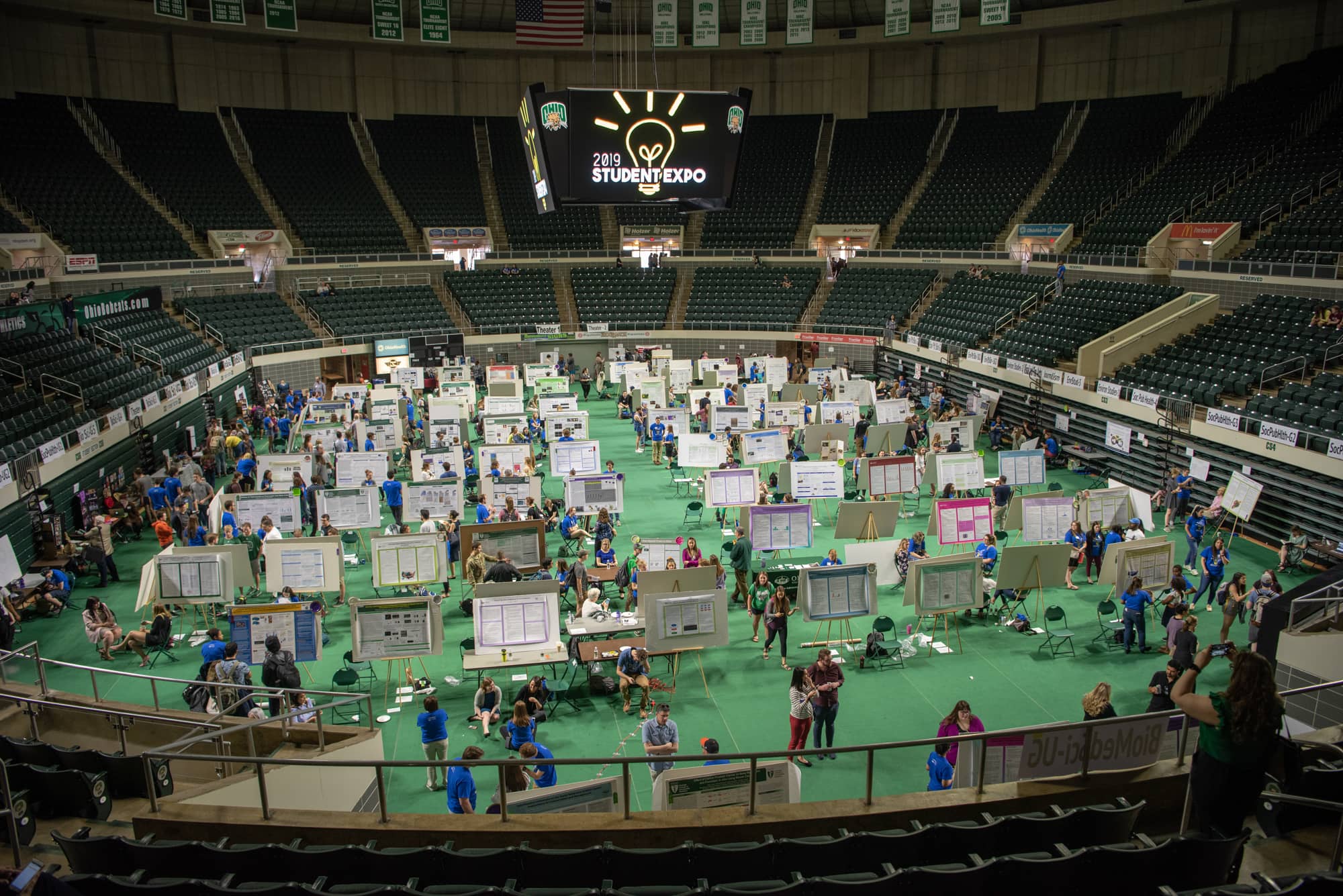
More than 800 students participate in the annual Student Research and Creative Activity Expo. It includes presenters from dozens of academic disciplines.
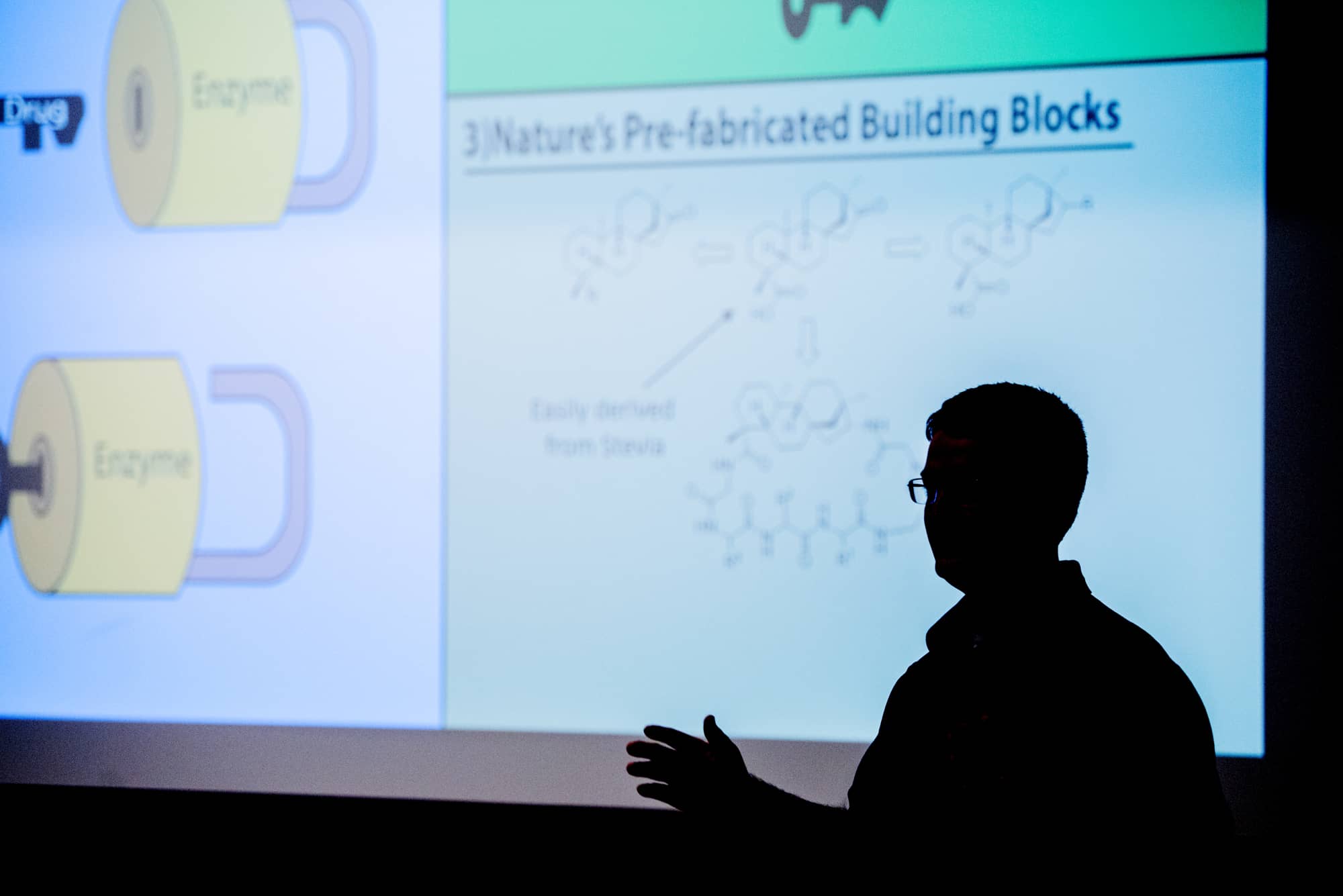
An OHIO graduate student presents research at a Three Minute Thesis competition at Stocker Center. Students have three minutes to present a compelling oration on their thesis and its significance. Five students won awards earlier this month.
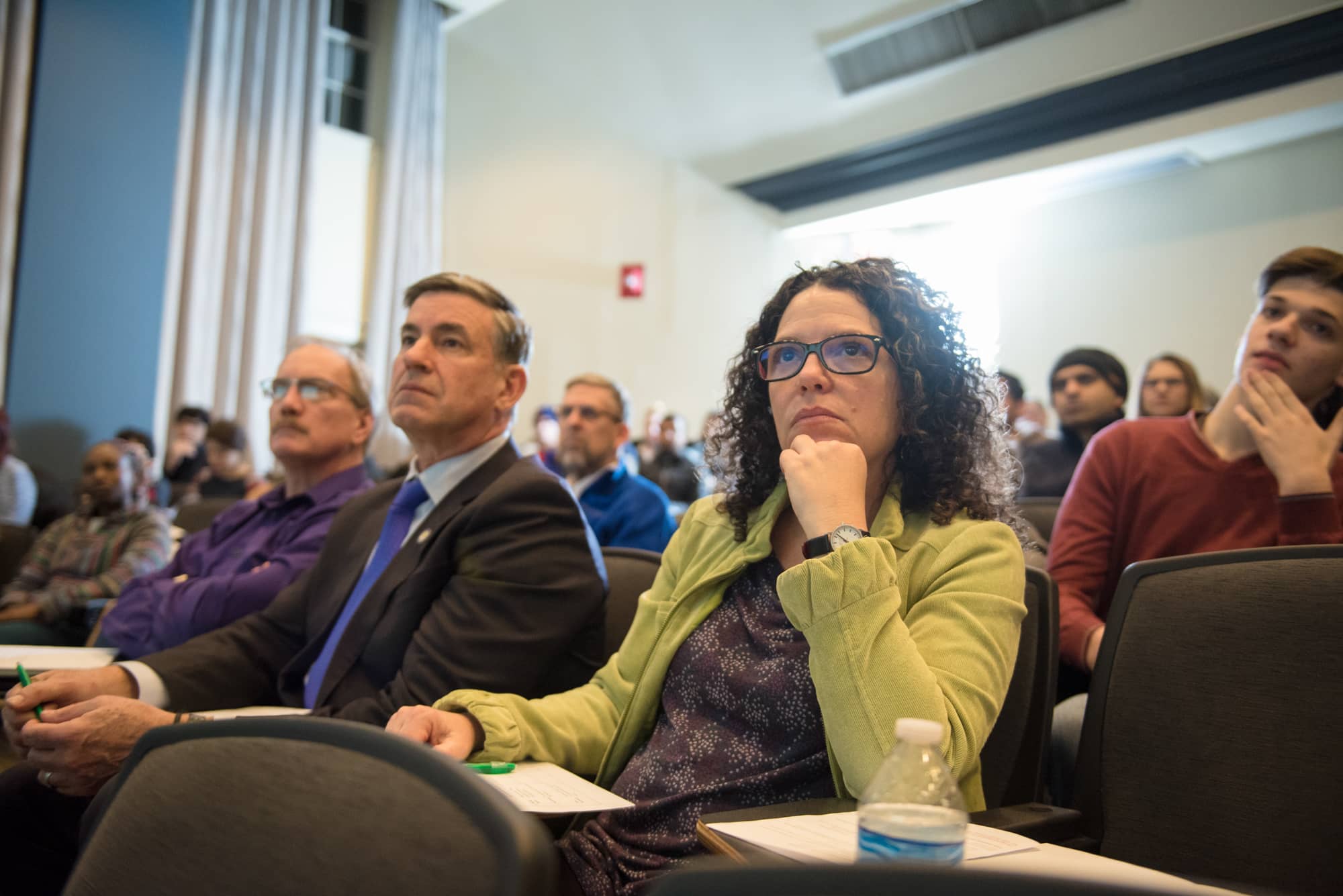
Faculty, staff and community members listen to Three Minute Thesis presentations at Stocker Center.
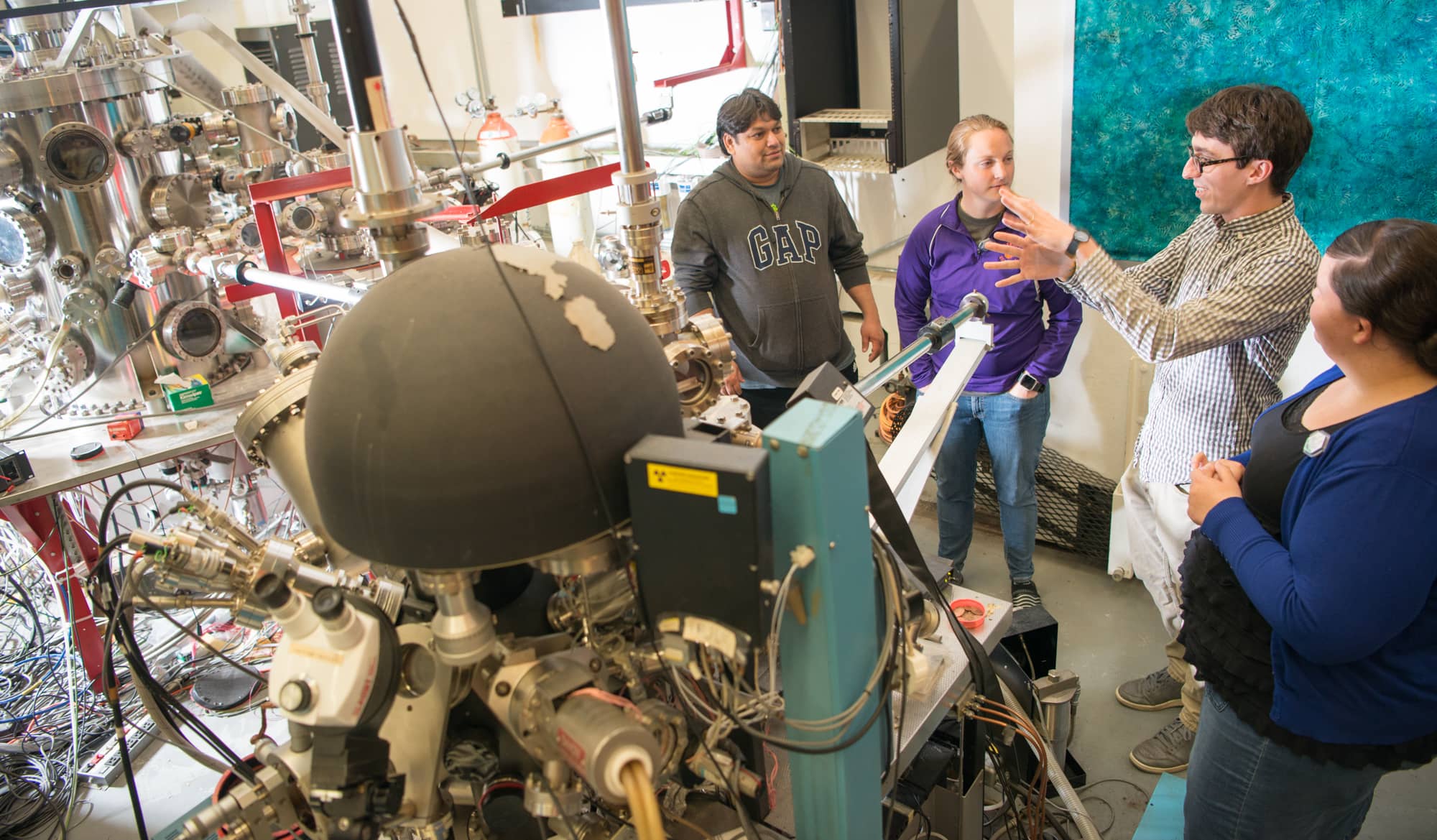
Zach Meisel, Ph.D, associate professor of Physics and Astronomy in the College of Arts and Sciences, instructs students at the Edwards Accelerator. Meisel is part of an international team researching the mysteries of the center of the sun and other nuclear infernos that produce the building blocks of the universe.

